How To Write A Research Paper
Research Paper Example


Research Paper Example - Examples for Different Formats
Published on: Jun 12, 2021
Last updated on: Jul 19, 2024

People also read
How to Write a Research Paper Step by Step
How to Write a Proposal For a Research Paper in 10 Steps
A Comprehensive Guide to Creating a Research Paper Outline
Types of Research - Methodologies and Characteristics
300+ Engaging Research Paper Topics to Get You Started
Interesting Psychology Research Topics & Ideas
Qualitative Research - Types, Methods & Examples
Understanding Quantitative Research - Definition, Types, Examples, And More
How To Start A Research Paper - Steps With Examples
How To Write a Literature Review for a Research Paper | Steps & Examples
Types of Qualitative Research Methods - An Overview
Understanding Qualitative vs. Quantitative Research - A Complete Guide
How to Cite a Research Paper in Different Citation Styles
Easy Sociology Research Topics for Your Next Project
200+ Outstanding History Research Paper Topics With Expert Tips
How To Write a Hypothesis in a Research Paper | Steps & Examples
How to Write an Introduction for a Research Paper - A Step-by-Step Guide
How to Write a Good Research Paper Title
How to Write a Conclusion for a Research Paper in 3 Simple Steps
How to Write an Abstract For a Research Paper with Examples
How To Write a Thesis For a Research Paper Step by Step
How to Write a Discussion For a Research Paper | Objectives, Steps & Examples
How to Write the Results Section of a Research Paper - Structure and Tips
How to Write a Problem Statement for a Research Paper in 6 Steps
How To Write The Methods Section of a Research Paper Step-by-Step
How to Find Sources For a Research Paper | A Guide
Share this article
Writing a research paper is the most challenging task in a student's academic life. researchers face similar writing process hardships, whether the research paper is to be written for graduate or masters.
A research paper is a writing type in which a detailed analysis, interpretation, and evaluation are made on the topic. It requires not only time but also effort and skills to be drafted correctly.
If you are working on your research paper for the first time, here is a collection of examples that you will need to understand the paper’s format and how its different parts are drafted. Continue reading the article to get free research paper examples.
On This Page On This Page -->
Research Paper Example for Different Formats
A research paper typically consists of several key parts, including an introduction, literature review, methodology, results, and annotated bibliography .
When writing a research paper (whether quantitative research or qualitative research ), it is essential to know which format to use to structure your content. Depending on the requirements of the institution, there are mainly four format styles in which a writer drafts a research paper:
Letâs look into each format in detail to understand the fundamental differences and similarities.
Research Paper Example APA
If your instructor asks you to provide a research paper in an APA format, go through the example given below and understand the basic structure. Make sure to follow the format throughout the paper.
APA Research Paper Sample (PDF)
Research Paper Example MLA
Another widespread research paper format is MLA. A few institutes require this format style as well for your research paper. Look at the example provided of this format style to learn the basics.
MLA Research Paper Sample (PDF)
Research Paper Example Chicago
Unlike MLA and APA styles, Chicago is not very common. Very few institutions require this formatting style research paper, but it is essential to learn it. Look at the example given below to understand the formatting of the content and citations in the research paper.
Chicago Research Paper Sample (PDF)
Research Paper Example Harvard
Learn how a research paper through Harvard formatting style is written through this example. Carefully examine how the cover page and other pages are structured.
Harvard Research Paper Sample (PDF)
Examples for Different Research Paper Parts
A research paper is based on different parts. Each part plays a significant role in the overall success of the paper. So each chapter of the paper must be drafted correctly according to a format and structure.
Below are examples of how different sections of the research paper are drafted.
Research Proposal Example
A research proposal is a plan that describes what you will investigate, its significance, and how you will conduct the study.
Research Proposal Sample (PDF)
Abstract Research Paper Example
An abstract is an executive summary of the research paper that includes the purpose of the research, the design of the study, and significant research findings.
It is a small section that is based on a few paragraphs. Following is an example of the abstract to help you draft yours professionally.
Abstract Research Paper Sample (PDF)
Literature Review Research Paper Example
A literature review in a research paper is a comprehensive summary of the previous research on your topic. It studies sources like books, articles, journals, and papers on the relevant research problem to form the basis of the new research.
Writing this section of the research paper perfectly is as important as any part of it.
Literature Review in Research Sample (PDF)
Methods Section of Research Paper Example
The method section comes after the introduction of the research paper that presents the process of collecting data. Basically, in this section, a researcher presents the details of how your research was conducted.
Methods Section in Research Sample (PDF)
Research Paper Conclusion Example
The conclusion is the last part of your research paper that sums up the writerâs discussion for the audience and leaves an impression. This is how it should be drafted:
Research Paper Conclusion Sample
Research Paper Examples for Different Fields
The research papers are not limited to a particular field. They can be written for any discipline or subject that needs a detailed study.
In the following section, various research paper examples are given to show how they are drafted for different subjects.
Science Research Paper Example
Are you a science student that has to conduct research? Here is an example for you to draft a compelling research paper for the field of science.
Science Research Paper Sample (PDF)
History Research Paper Example
Conducting research and drafting a paper is not only bound to science subjects. Other subjects like history and arts require a research paper to be written as well. Observe how research papers related to history are drafted.
History Research Paper Sample (PDF)
Psychology Research Paper Example
If you are a psychology student, look into the example provided in the research paper to help you draft yours professionally.
Psychology Research Paper Sample (PDF)
Research Paper Example for Different Levels
Writing a research paper is based on a list of elements. If the writer is not aware of the basic elements, the process of writing the paper will become daunting. Start writing your research paper taking the following steps:
- Choose a topic
- Form a strong thesis statement
- Conduct research
- Develop a research paper outline
Once you have a plan in your hand, the actual writing procedure will become a piece of cake for you.
No matter which level you are writing a research paper for, it has to be well structured and written to guarantee you better grades.
If you are a college or a high school student, the examples in the following section will be of great help.
Research Paper Outline (PDF)
Research Paper Example for College
Pay attention to the research paper example provided below. If you are a college student, this sample will help you understand how a winning paper is written.
College Research Paper Sample (PDF)
Research Paper Example for High School
Expert writers of CollegeEssay.org have provided an excellent example of a research paper for high school students. If you are struggling to draft an exceptional paper, go through the example provided.
High School Research Paper Sample (PDF)
Examples are essential when it comes to academic assignments. If you are a student and aim to achieve good grades in your assignments, it is suggested to get help from CollegeEssay.org .
We are the best writing company that delivers essay help for students by providing free samples and writing assistance.
Professional writers have your back, whether you are looking for guidance in writing a lab report, college essay, or research paper.
Simply hire a writer by placing your order at the most reasonable price. You can also take advantage of our essay writer to enhance your writing skills.
Nova A. (Literature, Marketing)
As a Digital Content Strategist, Nova Allison has eight years of experience in writing both technical and scientific content. With a focus on developing online content plans that engage audiences, Nova strives to write pieces that are not only informative but captivating as well.
Paper Due? Why Suffer? That’s our Job!

Keep reading

Legal & Policies
- Privacy Policy
- Cookies Policy
- Terms of Use
- Refunds & Cancellations
- Our Writers
- Success Stories
- Our Guarantees
- Affiliate Program
- Referral Program
- AI Essay Writer
Disclaimer: All client orders are completed by our team of highly qualified human writers. The essays and papers provided by us are not to be used for submission but rather as learning models only.

Sample Papers
This page contains sample papers formatted in seventh edition APA Style. The sample papers show the format that authors should use to submit a manuscript for publication in a professional journal and that students should use to submit a paper to an instructor for a course assignment. You can download the Word files to use as templates and edit them as needed for the purposes of your own papers.
Most guidelines in the Publication Manual apply to both professional manuscripts and student papers. However, there are specific guidelines for professional papers versus student papers, including professional and student title page formats. All authors should check with the person or entity to whom they are submitting their paper (e.g., publisher or instructor) for guidelines that are different from or in addition to those specified by APA Style.
Sample papers from the Publication Manual
The following two sample papers were published in annotated form in the Publication Manual and are reproduced here as PDFs for your ease of use. The annotations draw attention to content and formatting and provide the relevant sections of the Publication Manual (7th ed.) to consult for more information.
- Student sample paper with annotations (PDF, 5MB)
- Professional sample paper with annotations (PDF, 2.7MB)
We also offer these sample papers in Microsoft Word (.docx) format with the annotations as comments to the text.
- Student sample paper with annotations as comments (DOCX, 42KB)
- Professional sample paper with annotations as comments (DOCX, 103KB)
Finally, we offer these sample papers in Microsoft Word (.docx) format without the annotations.
- Student sample paper without annotations (DOCX, 36KB)
- Professional sample paper without annotations (DOCX, 96KB)
Sample professional paper templates by paper type
These sample papers demonstrate APA Style formatting standards for different professional paper types. Professional papers can contain many different elements depending on the nature of the work. Authors seeking publication should refer to the journal’s instructions for authors or manuscript submission guidelines for specific requirements and/or sections to include.
- Literature review professional paper template (DOCX, 47KB)
- Mixed methods professional paper template (DOCX, 68KB)
- Qualitative professional paper template (DOCX, 72KB)
- Quantitative professional paper template (DOCX, 77KB)
- Review professional paper template (DOCX, 112KB)
Sample papers are covered in the seventh edition APA Style manuals in the Publication Manual Chapter 2 and the Concise Guide Chapter 1
Related handouts
- Heading Levels Template: Student Paper (PDF, 257KB)
- Heading Levels Template: Professional Paper (PDF, 213KB)
Other instructional aids
- Journal Article Reporting Standards (JARS)
- APA Style Tutorials and Webinars
- Handouts and Guides
- Paper Format
View all instructional aids
Sample student paper templates by paper type
These sample papers demonstrate APA Style formatting standards for different student paper types. Students may write the same types of papers as professional authors (e.g., quantitative studies, literature reviews) or other types of papers for course assignments (e.g., reaction or response papers, discussion posts), dissertations, and theses.
APA does not set formal requirements for the nature or contents of an APA Style student paper. Students should follow the guidelines and requirements of their instructor, department, and/or institution when writing papers. For instance, an abstract and keywords are not required for APA Style student papers, although an instructor may request them in student papers that are longer or more complex. Specific questions about a paper being written for a course assignment should be directed to the instructor or institution assigning the paper.
- Discussion post student paper template (DOCX, 31KB)
- Literature review student paper template (DOCX, 37KB)
- Quantitative study student paper template (DOCX, 53KB)
Sample papers in real life
Although published articles differ in format from manuscripts submitted for publication or student papers (e.g., different line spacing, font, margins, and column format), articles published in APA journals provide excellent demonstrations of APA Style in action.
APA journals began publishing papers in seventh edition APA Style in 2020. Professional authors should check the author submission guidelines for the journal to which they want to submit their paper for any journal-specific style requirements.
Credits for sample professional paper templates
Quantitative professional paper template: Adapted from “Fake News, Fast and Slow: Deliberation Reduces Belief in False (but Not True) News Headlines,” by B. Bago, D. G. Rand, and G. Pennycook, 2020, Journal of Experimental Psychology: General , 149 (8), pp. 1608–1613 ( https://doi.org/10.1037/xge0000729 ). Copyright 2020 by the American Psychological Association.
Qualitative professional paper template: Adapted from “‘My Smartphone Is an Extension of Myself’: A Holistic Qualitative Exploration of the Impact of Using a Smartphone,” by L. J. Harkin and D. Kuss, 2020, Psychology of Popular Media , 10 (1), pp. 28–38 ( https://doi.org/10.1037/ppm0000278 ). Copyright 2020 by the American Psychological Association.
Mixed methods professional paper template: Adapted from “‘I Am a Change Agent’: A Mixed Methods Analysis of Students’ Social Justice Value Orientation in an Undergraduate Community Psychology Course,” by D. X. Henderson, A. T. Majors, and M. Wright, 2019, Scholarship of Teaching and Learning in Psychology , 7 (1), 68–80. ( https://doi.org/10.1037/stl0000171 ). Copyright 2019 by the American Psychological Association.
Literature review professional paper template: Adapted from “Rethinking Emotions in the Context of Infants’ Prosocial Behavior: The Role of Interest and Positive Emotions,” by S. I. Hammond and J. K. Drummond, 2019, Developmental Psychology , 55 (9), pp. 1882–1888 ( https://doi.org/10.1037/dev0000685 ). Copyright 2019 by the American Psychological Association.
Review professional paper template: Adapted from “Joining the Conversation: Teaching Students to Think and Communicate Like Scholars,” by E. L. Parks, 2022, Scholarship of Teaching and Learning in Psychology , 8 (1), pp. 70–78 ( https://doi.org/10.1037/stl0000193 ). Copyright 2020 by the American Psychological Association.
Credits for sample student paper templates
These papers came from real students who gave their permission to have them edited and posted by APA.
Purdue Online Writing Lab Purdue OWL® College of Liberal Arts
APA Sample Paper

Welcome to the Purdue OWL
This page is brought to you by the OWL at Purdue University. When printing this page, you must include the entire legal notice.
Copyright ©1995-2018 by The Writing Lab & The OWL at Purdue and Purdue University. All rights reserved. This material may not be published, reproduced, broadcast, rewritten, or redistributed without permission. Use of this site constitutes acceptance of our terms and conditions of fair use.
Note: This page reflects the latest version of the APA Publication Manual (i.e., APA 7), which released in October 2019. The equivalent resource for the older APA 6 style can be found here .
Media Files: APA Sample Student Paper , APA Sample Professional Paper
This resource is enhanced by Acrobat PDF files. Download the free Acrobat Reader
Note: The APA Publication Manual, 7 th Edition specifies different formatting conventions for student and professional papers (i.e., papers written for credit in a course and papers intended for scholarly publication). These differences mostly extend to the title page and running head. Crucially, citation practices do not differ between the two styles of paper.
However, for your convenience, we have provided two versions of our APA 7 sample paper below: one in student style and one in professional style.
Note: For accessibility purposes, we have used "Track Changes" to make comments along the margins of these samples. Those authored by [AF] denote explanations of formatting and [AWC] denote directions for writing and citing in APA 7.
APA 7 Student Paper:
Apa 7 professional paper:.
Research Paper Examples

Research paper examples are of great value for students who want to complete their assignments timely and efficiently. If you are a student in the university, your first stop in the quest for research paper examples will be the campus library where you can get to view the research sample papers of lecturers and other professionals in diverse fields plus those of fellow students who preceded you in the campus. Many college departments maintain libraries of previous student work, including large research papers, which current students can examine.
Embark on a journey of academic excellence with iResearchNet, your premier destination for research paper examples that illuminate the path to scholarly success. In the realm of academia, where the pursuit of knowledge is both a challenge and a privilege, the significance of having access to high-quality research paper examples cannot be overstated. These exemplars are not merely papers; they are beacons of insight, guiding students and scholars through the complex maze of academic writing and research methodologies.
At iResearchNet, we understand that the foundation of academic achievement lies in the quality of resources at one’s disposal. This is why we are dedicated to offering a comprehensive collection of research paper examples across a multitude of disciplines. Each example stands as a testament to rigorous research, clear writing, and the deep understanding necessary to advance in one’s academic and professional journey.
Access to superior research paper examples equips learners with the tools to develop their own ideas, arguments, and hypotheses, fostering a cycle of learning and discovery that transcends traditional boundaries. It is with this vision that iResearchNet commits to empowering students and researchers, providing them with the resources to not only meet but exceed the highest standards of academic excellence. Join us on this journey, and let iResearchNet be your guide to unlocking the full potential of your academic endeavors.
Academic Writing, Editing, Proofreading, And Problem Solving Services
Get 10% off with 24start discount code, what is a research paper.
- Anthropology
- Communication
- Criminal Justice
- Criminal Law
- Criminology
- Mental Health
- Political Science
Importance of Research Paper Examples
- Research Paper Writing Services
A Sample Research Paper on Child Abuse
A research paper represents the pinnacle of academic investigation, a scholarly manuscript that encapsulates a detailed study, analysis, or argument based on extensive independent research. It is an embodiment of the researcher’s ability to synthesize a wealth of information, draw insightful conclusions, and contribute novel perspectives to the existing body of knowledge within a specific field. At its core, a research paper strives to push the boundaries of what is known, challenging existing theories and proposing new insights that could potentially reshape the understanding of a particular subject area.
The objective of writing a research paper is manifold, serving both educational and intellectual pursuits. Primarily, it aims to educate the author, providing a rigorous framework through which they engage deeply with a topic, hone their research and analytical skills, and learn the art of academic writing. Beyond personal growth, the research paper serves the broader academic community by contributing to the collective pool of knowledge, offering fresh perspectives, and stimulating further research. It is a medium through which scholars communicate ideas, findings, and theories, thereby fostering an ongoing dialogue that propels the advancement of science, humanities, and other fields of study.
Research papers can be categorized into various types, each with distinct objectives and methodologies. The most common types include:
- Analytical Research Paper: This type focuses on analyzing different viewpoints represented in the scholarly literature or data. The author critically evaluates and interprets the information, aiming to provide a comprehensive understanding of the topic.
- Argumentative or Persuasive Research Paper: Here, the author adopts a stance on a contentious issue and argues in favor of their position. The objective is to persuade the reader through evidence and logic that the author’s viewpoint is valid or preferable.
- Experimental Research Paper: Often used in the sciences, this type documents the process, results, and implications of an experiment conducted by the author. It provides a detailed account of the methodology, data collected, analysis performed, and conclusions drawn.
- Survey Research Paper: This involves collecting data from a set of respondents about their opinions, behaviors, or characteristics. The paper analyzes this data to draw conclusions about the population from which the sample was drawn.
- Comparative Research Paper: This type involves comparing and contrasting different theories, policies, or phenomena. The aim is to highlight similarities and differences, thereby gaining a deeper understanding of the subjects under review.
- Cause and Effect Research Paper: It explores the reasons behind specific actions, events, or conditions and the consequences that follow. The goal is to establish a causal relationship between variables.
- Review Research Paper: This paper synthesizes existing research on a particular topic, offering a comprehensive analysis of the literature to identify trends, gaps, and consensus in the field.
Understanding the nuances and objectives of these various types of research papers is crucial for scholars and students alike, as it guides their approach to conducting and writing up their research. Each type demands a unique set of skills and perspectives, pushing the author to think critically and creatively about their subject matter. As the academic landscape continues to evolve, the research paper remains a fundamental tool for disseminating knowledge, encouraging innovation, and fostering a culture of inquiry and exploration.
Browse Sample Research Papers
iResearchNet prides itself on offering a wide array of research paper examples across various disciplines, meticulously curated to support students, educators, and researchers in their academic endeavors. Each example embodies the hallmarks of scholarly excellence—rigorous research, analytical depth, and clear, precise writing. Below, we explore the diverse range of research paper examples available through iResearchNet, designed to inspire and guide users in their quest for academic achievement.
Anthropology Research Paper Examples
Our anthropology research paper examples delve into the study of humanity, exploring cultural, social, biological, and linguistic variations among human populations. These papers offer insights into human behavior, traditions, and evolution, providing a comprehensive overview of anthropological research methods and theories.
- Archaeology Research Paper
- Forensic Anthropology Research Paper
- Linguistics Research Paper
- Medical Anthropology Research Paper
- Social Problems Research Paper
Art Research Paper Examples
The art research paper examples feature analyses of artistic expressions across different cultures and historical periods. These papers cover a variety of topics, including art history, criticism, and theory, as well as the examination of specific artworks or movements.
- Performing Arts Research Paper
- Music Research Paper
- Architecture Research Paper
- Theater Research Paper
- Visual Arts Research Paper
Cancer Research Paper Examples
Our cancer research paper examples focus on the latest findings in the field of oncology, discussing the biological mechanisms of cancer, advancements in diagnostic techniques, and innovative treatment strategies. These papers aim to contribute to the ongoing battle against cancer by sharing cutting-edge research.
- Breast Cancer Research Paper
- Leukemia Research Paper
- Lung Cancer Research Paper
- Ovarian Cancer Research Paper
- Prostate Cancer Research Paper
Communication Research Paper Examples
These examples explore the complexities of human communication, covering topics such as media studies, interpersonal communication, and public relations. The papers examine how communication processes affect individuals, societies, and cultures.
- Advertising Research Paper
- Journalism Research Paper
- Media Research Paper
- Public Relations Research Paper
- Public Speaking Research Paper
Crime Research Paper Examples
The crime research paper examples provided by iResearchNet investigate various aspects of criminal behavior and the factors contributing to crime. These papers cover a range of topics, from theoretical analyses of criminality to empirical studies on crime prevention strategies.
- Computer Crime Research Paper
- Domestic Violence Research Paper
- Hate Crimes Research Paper
- Organized Crime Research Paper
- White-Collar Crime Research Paper
Criminal Justice Research Paper Examples
Our criminal justice research paper examples delve into the functioning of the criminal justice system, exploring issues related to law enforcement, the judiciary, and corrections. These papers critically examine policies, practices, and reforms within the criminal justice system.
- Capital Punishment Research Paper
- Community Policing Research Paper
- Corporal Punishment Research Paper
- Criminal Investigation Research Paper
- Criminal Justice System Research Paper
- Plea Bargaining Research Paper
- Restorative Justice Research Paper
Criminal Law Research Paper Examples
These examples focus on the legal aspects of criminal behavior, discussing laws, regulations, and case law that govern criminal proceedings. The papers provide an in-depth analysis of criminal law principles, legal defenses, and the implications of legal decisions.
- Actus Reus Research Paper
- Gun Control Research Paper
- Insanity Defense Research Paper
- International Criminal Law Research Paper
- Self-Defense Research Paper
Criminology Research Paper Examples
iResearchNet’s criminology research paper examples study the causes, prevention, and societal impacts of crime. These papers employ various theoretical frameworks to analyze crime trends and propose effective crime reduction strategies.
- Cultural Criminology Research Paper
- Education and Crime Research Paper
- Marxist Criminology Research Paper
- School Crime Research Paper
- Urban Crime Research Paper
Culture Research Paper Examples
The culture research paper examples examine the beliefs, practices, and artifacts that define different societies. These papers explore how culture shapes identities, influences behaviors, and impacts social interactions.
- Advertising and Culture Research Paper
- Material Culture Research Paper
- Popular Culture Research Paper
- Cross-Cultural Studies Research Paper
- Culture Change Research Paper
Economics Research Paper Examples
Our economics research paper examples offer insights into the functioning of economies at both the micro and macro levels. Topics include economic theory, policy analysis, and the examination of economic indicators and trends.
- Budget Research Paper
- Cost-Benefit Analysis Research Paper
- Fiscal Policy Research Paper
- Labor Market Research Paper
Education Research Paper Examples
These examples address a wide range of issues in education, from teaching methods and curriculum design to educational policy and reform. The papers aim to enhance understanding and improve outcomes in educational settings.
- Early Childhood Education Research Paper
- Information Processing Research Paper
- Multicultural Education Research Paper
- Special Education Research Paper
- Standardized Tests Research Paper
Health Research Paper Examples
The health research paper examples focus on public health issues, healthcare systems, and medical interventions. These papers contribute to the discourse on health promotion, disease prevention, and healthcare management.
- AIDS Research Paper
- Alcoholism Research Paper
- Disease Research Paper
- Health Economics Research Paper
- Health Insurance Research Paper
- Nursing Research Paper
History Research Paper Examples
Our history research paper examples cover significant events, figures, and periods, offering critical analyses of historical narratives and their impact on present-day society.
- Adolf Hitler Research Paper
- American Revolution Research Paper
- Ancient Greece Research Paper
- Apartheid Research Paper
- Christopher Columbus Research Paper
- Climate Change Research Paper
- Cold War Research Paper
- Columbian Exchange Research Paper
- Deforestation Research Paper
- Diseases Research Paper
- Earthquakes Research Paper
- Egypt Research Paper
Leadership Research Paper Examples
These examples explore the theories and practices of effective leadership, examining the qualities, behaviors, and strategies that distinguish successful leaders in various contexts.
- Implicit Leadership Theories Research Paper
- Judicial Leadership Research Paper
- Leadership Styles Research Paper
- Police Leadership Research Paper
- Political Leadership Research Paper
- Remote Leadership Research Paper
Mental Health Research Paper Examples
The mental health research paper examples provided by iResearchNet discuss psychological disorders, therapeutic interventions, and mental health advocacy. These papers aim to raise awareness and improve mental health care practices.
- ADHD Research Paper
- Anxiety Research Paper
- Autism Research Paper
- Depression Research Paper
- Eating Disorders Research Paper
- PTSD Research Paper
- Schizophrenia Research Paper
- Stress Research Paper
Political Science Research Paper Examples
Our political science research paper examples analyze political systems, behaviors, and ideologies. Topics include governance, policy analysis, and the study of political movements and institutions.
- American Government Research Paper
- Civil War Research Paper
- Communism Research Paper
- Democracy Research Paper
- Game Theory Research Paper
- Human Rights Research Paper
- International Relations Research Paper
- Terrorism Research Paper
Psychology Research Paper Examples
These examples delve into the study of the mind and behavior, covering a broad range of topics in clinical, cognitive, developmental, and social psychology.
- Artificial Intelligence Research Paper
- Assessment Psychology Research Paper
- Biological Psychology Research Paper
- Clinical Psychology Research Paper
- Cognitive Psychology Research Paper
- Developmental Psychology Research Paper
- Discrimination Research Paper
- Educational Psychology Research Paper
- Environmental Psychology Research Paper
- Experimental Psychology Research Paper
- Intelligence Research Paper
- Learning Disabilities Research Paper
- Personality Psychology Research Paper
- Psychiatry Research Paper
- Psychotherapy Research Paper
- Social Cognition Research Paper
- Social Psychology Research Paper
Sociology Research Paper Examples
The sociology research paper examples examine societal structures, relationships, and processes. These papers provide insights into social phenomena, inequality, and change.
- Family Research Paper
- Demography Research Paper
- Group Dynamics Research Paper
- Quality of Life Research Paper
- Social Change Research Paper
- Social Movements Research Paper
- Social Networks Research Paper
Technology Research Paper Examples
Our technology research paper examples address the impact of technological advancements on society, exploring issues related to digital communication, cybersecurity, and innovation.
- Computer Forensics Research Paper
- Genetic Engineering Research Paper
- History of Technology Research Paper
- Internet Research Paper
- Nanotechnology Research Paper

Other Research Paper Examples
- Abortion Research Paper
- Adoption Research Paper
- Animal Testing Research Paper
- Bullying Research Paper
- Diversity Research Paper
- Divorce Research Paper
- Drugs Research Paper
- Environmental Issues Research Paper
- Ethics Research Paper
- Evolution Research Paper
- Feminism Research Paper
- Food Research Paper
- Gender Research Paper
- Globalization Research Paper
- Juvenile Justice Research Paper
- Law Research Paper
- Management Research Paper
- Philosophy Research Paper
- Public Health Research Paper
- Religion Research Paper
- Science Research Paper
- Social Sciences Research Paper
- Statistics Research Paper
- Other Sample Research Papers
Each category of research paper examples provided by iResearchNet serves as a valuable resource for students and researchers seeking to deepen their understanding of a specific field. By offering a comprehensive collection of well-researched and thoughtfully written papers, iResearchNet aims to support academic growth and encourage scholarly inquiry across diverse disciplines.
Sample Research Papers: To Read or Not to Read?
When you get an assignment to write a research paper, the first question you ask yourself is ‘Should I look for research paper examples?’ Maybe, I can deal with this task on my own without any help. Is it that difficult?
Thousands of students turn to our service every day for help. It does not mean that they cannot do their assignments on their own. They can, but the reason is different. Writing a research paper demands so much time and energy that asking for assistance seems to be a perfect solution. As the matter of fact, it is a perfect solution, especially, when you need to work to pay for your studying as well.
Firstly, if you search for research paper examples before you start writing, you can save your time significantly. You look at the example and you understand the gist of your assignment within several minutes. Secondly, when you examine some sample paper, you get to know all the requirements. You analyze the structure, the language, and the formatting details. Finally, reading examples helps students to overcome writer’s block, as other people’s ideas can motivate you to discover your own ideas.
The significance of research paper examples in the academic journey of students cannot be overstated. These examples serve not only as a blueprint for structuring and formatting academic papers but also as a beacon guiding students through the complex landscape of academic writing standards. iResearchNet recognizes the pivotal role that high-quality research paper examples play in fostering academic success and intellectual growth among students.
Blueprint for Academic Success
Research paper examples provided by iResearchNet are meticulously crafted to demonstrate the essential elements of effective academic writing. These examples offer clear insights into how to organize a paper, from the introductory paragraph, through the development of arguments and analysis, to the concluding remarks. They showcase the appropriate use of headings, subheadings, and the integration of tables, figures, and appendices, which collectively contribute to a well-organized and coherent piece of scholarly work. By studying these examples, students can gain a comprehensive understanding of the structure and formatting required in academic papers, which is crucial for meeting the rigorous standards of academic institutions.
Sparking Ideas and Providing Evidence
Beyond serving as a structural guide, research paper examples act as a source of inspiration for students embarking on their research projects. These examples illuminate a wide array of topics, methodologies, and analytical frameworks, thereby sparking ideas for students’ own research inquiries. They demonstrate how to effectively engage with existing literature, frame research questions, and develop a compelling thesis statement. Moreover, by presenting evidence and arguments in a logical and persuasive manner, these examples illustrate the art of substantiating claims with solid research, encouraging students to adopt a similar level of rigor and depth in their work.
Enhancing Research Skills
Engagement with high-quality research paper examples is instrumental in improving research skills among students. These examples expose students to various research methodologies, from qualitative case studies to quantitative analyses, enabling them to appreciate the breadth of research approaches applicable to their fields of study. By analyzing these examples, students learn how to critically evaluate sources, differentiate between primary and secondary data, and apply ethical considerations in research. Furthermore, these papers serve as a model for effectively citing sources, thereby teaching students the importance of academic integrity and the avoidance of plagiarism.

In essence, research paper examples are a fundamental resource that can significantly enhance the academic writing and research capabilities of students. iResearchNet’s commitment to providing access to a diverse collection of exemplary papers reflects its dedication to supporting academic excellence. Through these examples, students are equipped with the tools necessary to navigate the challenges of academic writing, foster innovative thinking, and contribute meaningfully to the scholarly community. By leveraging these resources, students can elevate their academic pursuits, ensuring their research is not only rigorous but also impactful.
Custom Research Paper Writing Services
In the academic journey, the ability to craft a compelling and meticulously researched paper is invaluable. Recognizing the challenges and pressures that students face, iResearchNet has developed a suite of research paper writing services designed to alleviate the burden of academic writing and research. Our services are tailored to meet the diverse needs of students across all academic disciplines, ensuring that every research paper not only meets but exceeds the rigorous standards of scholarly excellence. Below, we detail the multifaceted aspects of our research paper writing services, illustrating how iResearchNet stands as a beacon of support in the academic landscape.
At iResearchNet, we understand the pivotal role that research papers play in the academic and professional development of students. With this understanding at our core, we offer comprehensive writing services that cater to the intricate process of research paper creation. Our services are designed to guide students through every stage of the writing process, from initial research to final submission, ensuring clarity, coherence, and scholarly rigor.
The Need for Research Paper Writing Services
Navigating the complexities of academic writing and research can be a daunting task for many students. The challenges of identifying credible sources, synthesizing information, adhering to academic standards, and articulating arguments cohesively are significant. Furthermore, the pressures of tight deadlines and the high stakes of academic success can exacerbate the difficulties faced by students. iResearchNet’s research paper writing services are crafted to address these challenges head-on, providing expert assistance that empowers students to achieve their academic goals with confidence.
Why Choose iResearchNet
Selecting the right partner for research paper writing is a pivotal decision for students and researchers aiming for academic excellence. iResearchNet stands out as the premier choice for several compelling reasons, each designed to meet the diverse needs of our clientele and ensure their success.
- Expert Writers : At iResearchNet, we pride ourselves on our team of expert writers who are not only masters in their respective fields but also possess a profound understanding of academic writing standards. With advanced degrees and extensive experience, our writers bring depth, insight, and precision to each paper, ensuring that your work is informed by the latest research and methodologies.
- Top Quality : Quality is the cornerstone of our services. We adhere to rigorous quality control processes to ensure that every paper we deliver meets the highest standards of academic excellence. Our commitment to quality means thorough research, impeccable writing, and meticulous proofreading, resulting in work that not only meets but exceeds expectations.
- Customized Solutions : Understanding that each research project has its unique challenges and requirements, iResearchNet offers customized solutions tailored to your specific needs. Whether you’re grappling with a complex research topic, a tight deadline, or specific formatting guidelines, our team is equipped to provide personalized support that aligns with your objectives.
- Affordable Prices : We believe that access to high-quality research paper writing services should not be prohibitive. iResearchNet offers competitive pricing structures designed to provide value without compromising on quality. Our transparent pricing model ensures that you know exactly what you are paying for, with no hidden costs or surprises.
- Timely Delivery : Meeting deadlines is critical in academic writing, and at iResearchNet, we take this seriously. Our efficient processes and dedicated team ensure that your paper is delivered on time, every time, allowing you to meet your academic deadlines with confidence.
- 24/7 Support : Our commitment to your success is reflected in our round-the-clock support. Whether you have a question about your order, need to communicate with your writer, or require assistance with any aspect of our service, our friendly and knowledgeable support team is available 24/7 to assist you.
- Money-Back Guarantee : Your satisfaction is our top priority. iResearchNet offers a money-back guarantee, ensuring that if for any reason you are not satisfied with the work delivered, you are entitled to a refund. This policy underscores our confidence in the quality of our services and our dedication to your success.
Choosing iResearchNet for your research paper writing needs means partnering with a trusted provider committed to excellence, innovation, and customer satisfaction. Our unparalleled blend of expert writers, top-quality work, customized solutions, affordability, timely delivery, 24/7 support, and a money-back guarantee makes us the ideal choice for students and researchers seeking to elevate their academic performance.
How It Works: iResearchNet’s Streamlined Process
Navigating the process of obtaining a top-notch research paper has never been more straightforward, thanks to iResearchNet’s streamlined approach. Our user-friendly system ensures that from the moment you decide to place your order to the final receipt of your custom-written paper, every step is seamless, transparent, and tailored to your needs. Here’s how our comprehensive process works:
- Place Your Order : Begin your journey to academic success by visiting our website and filling out the order form. Here, you’ll provide details about your research paper, including the topic, academic level, number of pages, formatting style, and any specific instructions or requirements. This initial step is crucial for us to understand your needs fully and match you with the most suitable writer.
- Make Payment : Once your order details are confirmed, you’ll proceed to the payment section. Our platform offers a variety of secure payment options, ensuring that your transaction is safe and hassle-free. Our transparent pricing policy means you’ll know exactly what you’re paying for upfront, with no hidden fees.
- Choose Your Writer : After payment, you’ll have the opportunity to choose a writer from our team of experts. Our writers are categorized based on their fields of expertise, academic qualifications, and customer feedback ratings. This step empowers you to select the writer who best matches your research paper’s requirements, ensuring a personalized and targeted approach to your project.
- Receive Your Work : Our writer will commence work on your research paper, adhering to the specified guidelines and timelines. Throughout this process, you’ll have the ability to communicate directly with your writer, allowing for updates, revisions, and clarifications to ensure the final product meets your expectations. Once completed, your research paper will undergo a thorough quality check before being delivered to you via your chosen method.
- Free Revisions : Your satisfaction is our priority. Upon receiving your research paper, you’ll have the opportunity to review the work and request any necessary revisions. iResearchNet offers free revisions within a specified period, ensuring that your final paper perfectly aligns with your academic requirements and expectations.
Our process is designed to provide you with a stress-free experience and a research paper that reflects your academic goals. From placing your order to enjoying the success of a well-written paper, iResearchNet is here to support you every step of the way.
Our Extras: Enhancing Your iResearchNet Experience
At iResearchNet, we are committed to offering more than just standard research paper writing services. We understand the importance of providing a comprehensive and personalized experience for each of our clients. That’s why we offer a range of additional services designed to enhance your experience and ensure your academic success. Here are the exclusive extras you can benefit from:
- VIP Service : Elevate your iResearchNet experience with our VIP service, offering you priority treatment from the moment you place your order. This service ensures your projects are given first priority, with immediate attention from our team, and direct access to our top-tier writers and editors. VIP clients also benefit from our highest level of customer support, available to address any inquiries or needs with utmost urgency and personalized care.
- Plagiarism Report : Integrity and originality are paramount in academic writing. To provide you with peace of mind, we offer a detailed plagiarism report with every research paper. This report is generated using advanced plagiarism detection software, ensuring that your work is unique and adheres to the highest standards of academic honesty.
- Text Messages : Stay informed about your order’s progress with real-time updates sent directly to your phone. This service ensures you’re always in the loop, providing immediate notifications about key milestones, writer assignments, and any changes to your order status. With this added layer of communication, you can relax knowing that you’ll never miss an important update about your research paper.
- Table of Contents : A well-organized research paper is key to guiding readers through your work. Our service includes the creation of a detailed table of contents, meticulously structured to reflect the main sections and subsections of your paper. This not only enhances the navigability of your document but also presents your research in a professional and academically appropriate format.
- Abstract Page : The abstract page is your research paper’s first impression, summarizing the essential points of your study and its conclusions. Crafting a compelling abstract is an art, and our experts are skilled in highlighting the significance, methodology, results, and implications of your research succinctly and effectively. This service ensures that your paper makes a strong impact from the very beginning.
- Editor’s Check : Before your research paper reaches you, it undergoes a final review by our team of experienced editors. This editor’s check is a comprehensive process that includes proofreading for grammar, punctuation, and spelling errors, as well as ensuring that the paper meets all your specifications and academic standards. This meticulous attention to detail guarantees that your paper is polished, professional, and ready for submission.
To ensure your research paper is of the highest quality and ready for submission, it undergoes a rigorous editor’s check. This final review process includes a thorough examination for any grammatical, punctuation, or spelling errors, as well as a verification that the paper meets all your specified requirements and academic standards. Our editors’ meticulous approach guarantees that your paper is polished, accurate, and exemplary.
By choosing iResearchNet and leveraging our extras, you can elevate the quality of your research paper and enjoy a customized, worry-free academic support experience.
A research paper is an academic piece of writing, so you need to follow all the requirements and standards. Otherwise, it will be impossible to get the high results. To make it easier for you, we have analyzed the structure and peculiarities of a sample research paper on the topic ‘Child Abuse’.
The paper includes 7300+ words, a detailed outline, citations are in APA formatting style, and bibliography with 28 sources.
To write any paper you need to write a great outline. This is the key to a perfect paper. When you organize your paper, it is easier for you to present the ideas logically, without jumping from one thought to another.
In the outline, you need to name all the parts of your paper. That is to say, an introduction, main body, conclusion, bibliography, some papers require abstract and proposal as well.
A good outline will serve as a guide through your paper making it easier for the reader to follow your ideas.
I. Introduction
Ii. estimates of child abuse: methodological limitations, iii. child abuse and neglect: the legalities, iv. corporal punishment versus child abuse, v. child abuse victims: the patterns, vi. child abuse perpetrators: the patterns, vii. explanations for child abuse, viii. consequences of child abuse and neglect, ix. determining abuse: how to tell whether a child is abused or neglected, x. determining abuse: interviewing children, xi. how can society help abused children and abusive families, introduction.
An introduction should include a thesis statement and the main points that you will discuss in the paper.
A thesis statement is one sentence in which you need to show your point of view. You will then develop this point of view through the whole piece of work:
‘The impact of child abuse affects more than one’s childhood, as the psychological and physical injuries often extend well into adulthood.’
Child abuse is a very real and prominent social problem today. The impact of child abuse affects more than one’s childhood, as the psychological and physical injuries often extend well into adulthood. Most children are defenseless against abuse, are dependent on their caretakers, and are unable to protect themselves from these acts.
Childhood serves as the basis for growth, development, and socialization. Throughout adolescence, children are taught how to become productive and positive, functioning members of society. Much of the socializing of children, particularly in their very earliest years, comes at the hands of family members. Unfortunately, the messages conveyed to and the actions against children by their families are not always the positive building blocks for which one would hope.
In 2008, the Children’s Defense Fund reported that each day in America, 2,421 children are confirmed as abused or neglected, 4 children are killed by abuse or neglect, and 78 babies die before their first birthday. These daily estimates translate into tremendous national figures. In 2006, caseworkers substantiated an estimated 905,000 reports of child abuse or neglect. Of these, 64% suffered neglect, 16% were physically abused, 9% were sexually abused, 7% were emotionally or psychologically maltreated, and 2% were medically neglected. In addition, 15% of the victims experienced “other” types of maltreatment such as abandonment, threats of harm to the child, and congenital drug addiction (National Child Abuse and Neglect Data System, 2006). Obviously, this problem is a substantial one.
In the main body, you dwell upon the topic of your paper. You provide your ideas and support them with evidence. The evidence include all the data and material you have found, analyzed and systematized. You can support your point of view with different statistical data, with surveys, and the results of different experiments. Your task is to show that your idea is right, and make the reader interested in the topic.
In this example, a writer analyzes the issue of child abuse: different statistical data, controversies regarding the topic, examples of the problem and the consequences.
Several issues arise when considering the amount of child abuse that occurs annually in the United States. Child abuse is very hard to estimate because much (or most) of it is not reported. Children who are abused are unlikely to report their victimization because they may not know any better, they still love their abusers and do not want to see them taken away (or do not themselves want to be taken away from their abusers), they have been threatened into not reporting, or they do not know to whom they should report their victimizations. Still further, children may report their abuse only to find the person to whom they report does not believe them or take any action on their behalf. Continuing to muddy the waters, child abuse can be disguised as legitimate injury, particularly because young children are often somewhat uncoordinated and are still learning to accomplish physical tasks, may not know their physical limitations, and are often legitimately injured during regular play. In the end, children rarely report child abuse; most often it is an adult who makes a report based on suspicion (e.g., teacher, counselor, doctor, etc.).
Even when child abuse is reported, social service agents and investigators may not follow up or substantiate reports for a variety of reasons. Parents can pretend, lie, or cover up injuries or stories of how injuries occurred when social service agents come to investigate. Further, there is not always agreement about what should be counted as abuse by service providers and researchers. In addition, social service agencies/agents have huge caseloads and may only be able to deal with the most serious forms of child abuse, leaving the more “minor” forms of abuse unsupervised and unmanaged (and uncounted in the statistical totals).
While most laws about child abuse and neglect fall at the state levels, federal legislation provides a foundation for states by identifying a minimum set of acts and behaviors that define child abuse and neglect. The Federal Child Abuse Prevention and Treatment Act (CAPTA), which stems from the Keeping Children and Families Safe Act of 2003, defines child abuse and neglect as, at minimum, “(1) any recent act or failure to act on the part of a parent or caretaker which results in death, serious physical or emotional harm, sexual abuse, or exploitation; or (2) an act or failure to act which presents an imminent risk or serious harm.”
Using these minimum standards, each state is responsible for providing its own definition of maltreatment within civil and criminal statutes. When defining types of child abuse, many states incorporate similar elements and definitions into their legal statutes. For example, neglect is often defined as failure to provide for a child’s basic needs. Neglect can encompass physical elements (e.g., failure to provide necessary food or shelter, or lack of appropriate supervision), medical elements (e.g., failure to provide necessary medical or mental health treatment), educational elements (e.g., failure to educate a child or attend to special educational needs), and emotional elements (e.g., inattention to a child’s emotional needs, failure to provide psychological care, or permitting the child to use alcohol or other drugs). Failure to meet needs does not always mean a child is neglected, as situations such as poverty, cultural values, and community standards can influence the application of legal statutes. In addition, several states distinguish between failure to provide based on financial inability and failure to provide for no apparent financial reason.
Statutes on physical abuse typically include elements of physical injury (ranging from minor bruises to severe fractures or death) as a result of punching, beating, kicking, biting, shaking, throwing, stabbing, choking, hitting (with a hand, stick, strap, or other object), burning, or otherwise harming a child. Such injury is considered abuse regardless of the intention of the caretaker. In addition, many state statutes include allowing or encouraging another person to physically harm a child (such as noted above) as another form of physical abuse in and of itself. Sexual abuse usually includes activities by a parent or caretaker such as fondling a child’s genitals, penetration, incest, rape, sodomy, indecent exposure, and exploitation through prostitution or the production of pornographic materials.
Finally, emotional or psychological abuse typically is defined as a pattern of behavior that impairs a child’s emotional development or sense of self-worth. This may include constant criticism, threats, or rejection, as well as withholding love, support, or guidance. Emotional abuse is often the most difficult to prove and, therefore, child protective services may not be able to intervene without evidence of harm to the child. Some states suggest that harm may be evidenced by an observable or substantial change in behavior, emotional response, or cognition, or by anxiety, depression, withdrawal, or aggressive behavior. At a practical level, emotional abuse is almost always present when other types of abuse are identified.
Some states include an element of substance abuse in their statutes on child abuse. Circumstances that can be considered substance abuse include (a) the manufacture of a controlled substance in the presence of a child or on the premises occupied by a child (Colorado, Indiana, Iowa, Montana, South Dakota, Tennessee, and Virginia); (b) allowing a child to be present where the chemicals or equipment for the manufacture of controlled substances are used (Arizona, New Mexico); (c) selling, distributing, or giving drugs or alcohol to a child (Florida, Hawaii, Illinois, Minnesota, and Texas); (d) use of a controlled substance by a caregiver that impairs the caregiver’s ability to adequately care for the child (Kentucky, New York, Rhode Island, and Texas); and (e) exposure of the child to drug paraphernalia (North Dakota), the criminal sale or distribution of drugs (Montana, Virginia), or drug-related activity (District of Columbia).
One of the most difficult issues with which the U.S. legal system must contend is that of allowing parents the right to use corporal punishment when disciplining a child, while not letting them cross over the line into the realm of child abuse. Some parents may abuse their children under the guise of discipline, and many instances of child abuse arise from angry parents who go too far when disciplining their children with physical punishment. Generally, state statutes use terms such as “reasonable discipline of a minor,” “causes only temporary, short-term pain,” and may cause “the potential for bruising” but not “permanent damage, disability, disfigurement or injury” to the child as ways of indicating the types of discipline behaviors that are legal. However, corporal punishment that is “excessive,” “malicious,” “endangers the bodily safety of,” or is “an intentional infliction of injury” is not allowed under most state statutes (e.g., state of Florida child abuse statute).
Most research finds that the use of physical punishment (most often spanking) is not an effective method of discipline. The literature on this issue tends to find that spanking stops misbehavior, but no more effectively than other firm measures. Further, it seems to hinder rather than improve general compliance/obedience (particularly when the child is not in the presence of the punisher). Researchers have also explained why physical punishment is not any more effective at gaining child compliance than nonviolent forms of discipline. Some of the problems that arise when parents use spanking or other forms of physical punishment include the fact that spanking does not teach what children should do, nor does it provide them with alternative behavior options should the circumstance arise again. Spanking also undermines reasoning, explanation, or other forms of parental instruction because children cannot learn, reason, or problem solve well while experiencing threat, pain, fear, or anger. Further, the use of physical punishment is inconsistent with nonviolent principles, or parental modeling. In addition, the use of spanking chips away at the bonds of affection between parents and children, and tends to induce resentment and fear. Finally, it hinders the development of empathy and compassion in children, and they do not learn to take responsibility for their own behavior (Pitzer, 1997).
One of the biggest problems with the use of corporal punishment is that it can escalate into much more severe forms of violence. Usually, parents spank because they are angry (and somewhat out of control) and they can’t think of other ways to discipline. When parents are acting as a result of emotional triggers, the notion of discipline is lost while punishment and pain become the foci.
In 2006, of the children who were found to be victims of child abuse, nearly 75% of them were first-time victims (or had not come to the attention of authorities prior). A slight majority of child abuse victims were girls—51.5%, compared to 48% of abuse victims being boys. The younger the child, the more at risk he or she is for child abuse and neglect victimization. Specifically, the rate for infants (birth to 1 year old) was approximately 24 per 1,000 children of the same age group. The victimization rate for children 1–3 years old was 14 per 1,000 children of the same age group. The abuse rate for children aged 4– 7 years old declined further to 13 per 1,000 children of the same age group. African American, American Indian, and Alaska Native children, as well as children of multiple races, had the highest rates of victimization. White and Latino children had lower rates, and Asian children had the lowest rates of child abuse and neglect victimization. Regarding living arrangements, nearly 27% of victims were living with a single mother, 20% were living with married parents, while 22% were living with both parents but the marital status was unknown. (This reporting element had nearly 40% missing data, however.) Regarding disability, nearly 8% of child abuse victims had some degree of mental retardation, emotional disturbance, visual or hearing impairment, learning disability, physical disability, behavioral problems, or other medical problems. Unfortunately, data indicate that for many victims, the efforts of the child protection services system were not successful in preventing subsequent victimization. Children who had been prior victims of maltreatment were 96% more likely to experience another occurrence than those who were not prior victims. Further, child victims who were reported to have a disability were 52% more likely to experience recurrence than children without a disability. Finally, the oldest victims (16–21 years of age) were the least likely to experience a recurrence, and were 51% less likely to be victimized again than were infants (younger than age 1) (National Child Abuse and Neglect Data System, 2006).
Child fatalities are the most tragic consequence of maltreatment. Yet, each year, children die from abuse and neglect. In 2006, an estimated 1,530 children in the United States died due to abuse or neglect. The overall rate of child fatalities was 2 deaths per 100,000 children. More than 40% of child fatalities were attributed to neglect, but physical abuse also was a major contributor. Approximately 78% of the children who died due to child abuse and neglect were younger than 4 years old, and infant boys (younger than 1) had the highest rate of fatalities at 18.5 deaths per 100,000 boys of the same age in the national population. Infant girls had a rate of 14.7 deaths per 100,000 girls of the same age (National Child Abuse and Neglect Data System, 2006).
One question to be addressed regarding child fatalities is why infants have such a high rate of death when compared to toddlers and adolescents. Children under 1 year old pose an immense amount of responsibility for their caretakers: they are completely dependent and need constant attention. Children this age are needy, impulsive, and not amenable to verbal control or effective communication. This can easily overwhelm vulnerable parents. Another difficulty associated with infants is that they are physically weak and small. Injuries to infants can be fatal, while similar injuries to older children might not be. The most common cause of death in children less than 1 year is cerebral trauma (often the result of shaken-baby syndrome). Exasperated parents can deliver shakes or blows without realizing how little it takes to cause irreparable or fatal damage to an infant. Research informs us that two of the most common triggers for fatal child abuse are crying that will not cease and toileting accidents. Both of these circumstances are common in infants and toddlers whose only means of communication often is crying, and who are limited in mobility and cannot use the toilet. Finally, very young children cannot assist in injury diagnoses. Children who have been injured due to abuse or neglect often cannot communicate to medical professionals about where it hurts, how it hurts, and so forth. Also, nonfatal injuries can turn fatal in the absence of care by neglectful parents or parents who do not want medical professionals to possibly identify an injury as being the result of abuse.
Estimates reveal that nearly 80% of perpetrators of child abuse were parents of the victim. Other relatives accounted for nearly 7%, and unmarried partners of parents made up 4% of perpetrators. Of those perpetrators that were parents, over 90% were biological parents, 4% were stepparents, and 0.7% were adoptive parents. Of this group, approximately 58% of perpetrators were women and 42% were men. Women perpetrators are typically younger than men. The average age for women abusers was 31 years old, while for men the average was 34 years old. Forty percent of women who abused were younger than 30 years of age, compared with 33% of men being under 30. The racial distribution of perpetrators is similar to that of victims. Fifty-four percent were white, 21% were African American, and 20% were Hispanic/Latino (National Child Abuse and Neglect Data System, 2006).
There are many factors that are associated with child abuse. Some of the more common/well-accepted explanations are individual pathology, parent–child interaction, past abuse in the family (or social learning), situational factors, and cultural support for physical punishment along with a lack of cultural support for helping parents here in the United States.
The first explanation centers on the individual pathology of a parent or caretaker who is abusive. This theory focuses on the idea that people who abuse their children have something wrong with their individual personality or biological makeup. Such psychological pathologies may include having anger control problems; being depressed or having post-partum depression; having a low tolerance for frustration (e.g., children can be extremely frustrating: they don’t always listen; they constantly push the line of how far they can go; and once the line has been established, they are constantly treading on it to make sure it hasn’t moved. They are dependent and self-centered, so caretakers have very little privacy or time to themselves); being rigid (e.g., having no tolerance for differences—for example, what if your son wanted to play with dolls? A rigid father would not let him, laugh at him for wanting to, punish him when he does, etc.); having deficits in empathy (parents who cannot put themselves in the shoes of their children cannot fully understand what their children need emotionally); or being disorganized, inefficient, and ineffectual. (Parents who are unable to manage their own lives are unlikely to be successful at managing the lives of their children, and since many children want and need limits, these parents are unable to set them or adhere to them.)
Biological pathologies that may increase the likelihood of someone becoming a child abuser include having substance abuse or dependence problems, or having persistent or reoccurring physical health problems (especially health problems that can be extremely painful and can cause a person to become more self-absorbed, both qualities that can give rise to a lack of patience, lower frustration tolerance, and increased stress).
The second explanation for child abuse centers on the interaction between the parent and the child, noting that certain types of parents are more likely to abuse, and certain types of children are more likely to be abused, and when these less-skilled parents are coupled with these more difficult children, child abuse is the most likely to occur. Discussion here focuses on what makes a parent less skilled, and what makes a child more difficult. Characteristics of unskilled parents are likely to include such traits as only pointing out what children do wrong and never giving any encouragement for good behavior, and failing to be sensitive to the emotional needs of children. Less skilled parents tend to have unrealistic expectations of children. They may engage in role reversal— where the parents make the child take care of them—and view the parent’s happiness and well-being as the responsibility of the child. Some parents view the parental role as extremely stressful and experience little enjoyment from being a parent. Finally, less-skilled parents tend to have more negative perceptions regarding their child(ren). For example, perhaps the child has a different shade of skin than they expected and this may disappoint or anger them, they may feel the child is being manipulative (long before children have this capability), or they may view the child as the scapegoat for all the parents’ or family’s problems. Theoretically, parents with these characteristics would be more likely to abuse their children, but if they are coupled with having a difficult child, they would be especially likely to be abusive. So, what makes a child more difficult? Certainly, through no fault of their own, children may have characteristics that are associated with child care that is more demanding and difficult than in the “normal” or “average” situation. Such characteristics can include having physical and mental disabilities (autism, attention deficit hyperactivity disorder [ADHD], hyperactivity, etc.); the child may be colicky, frequently sick, be particularly needy, or cry more often. In addition, some babies are simply unhappier than other babies for reasons that cannot be known. Further, infants are difficult even in the best of circumstances. They are unable to communicate effectively, and they are completely dependent on their caretakers for everything, including eating, diaper changing, moving around, entertainment, and emotional bonding. Again, these types of children, being more difficult, are more likely to be victims of child abuse.
Nonetheless, each of these types of parents and children alone cannot explain the abuse of children, but it is the interaction between them that becomes the key. Unskilled parents may produce children that are happy and not as needy, and even though they are unskilled, they do not abuse because the child takes less effort. At the same time, children who are more difficult may have parents who are skilled and are able to handle and manage the extra effort these children take with aplomb. However, risks for child abuse increase when unskilled parents must contend with difficult children.
Social learning or past abuse in the family is a third common explanation for child abuse. Here, the theory concentrates not only on what children learn when they see or experience violence in their homes, but additionally on what they do not learn as a result of these experiences. Social learning theory in the context of family violence stresses that if children are abused or see abuse (toward siblings or a parent), those interactions and violent family members become the representations and role models for their future familial interactions. In this way, what children learn is just as important as what they do not learn. Children who witness or experience violence may learn that this is the way parents deal with children, or that violence is an acceptable method of child rearing and discipline. They may think when they become parents that “violence worked on me when I was a child, and I turned out fine.” They may learn unhealthy relationship interaction patterns; children may witness the negative interactions of parents and they may learn the maladaptive or violent methods of expressing anger, reacting to stress, or coping with conflict.
What is equally as important, though, is that they are unlikely to learn more acceptable and nonviolent ways of rearing children, interacting with family members, and working out conflict. Here it may happen that an adult who was abused as a child would like to be nonviolent toward his or her own children, but when the chips are down and the child is misbehaving, this abused-child-turned-adult does not have a repertoire of nonviolent strategies to try. This parent is more likely to fall back on what he or she knows as methods of discipline.
Something important to note here is that not all abused children grow up to become abusive adults. Children who break the cycle were often able to establish and maintain one healthy emotional relationship with someone during their childhoods (or period of young adulthood). For instance, they may have received emotional support from a nonabusing parent, or they received social support and had a positive relationship with another adult during their childhood (e.g., teacher, coach, minister, neighbor, etc.). Abused children who participate in therapy during some period of their lives can often break the cycle of violence. In addition, adults who were abused but are able to form an emotionally supportive and satisfying relationship with a mate can make the transition to being nonviolent in their family interactions.
Moving on to a fourth familiar explanation for child abuse, there are some common situational factors that influence families and parents and increase the risks for child abuse. Typically, these are factors that increase family stress or social isolation. Specifically, such factors may include receiving public assistance or having low socioeconomic status (a combination of low income and low education). Other factors include having family members who are unemployed, underemployed (working in a job that requires lower qualifications than an individual possesses), or employed only part time. These financial difficulties cause great stress for families in meeting the needs of the individual members. Other stress-inducing familial characteristics are single-parent households and larger family size. Finally, social isolation can be devastating for families and family members. Having friends to talk to, who can be relied upon, and with whom kids can be dropped off occasionally is tremendously important for personal growth and satisfaction in life. In addition, social isolation and stress can cause individuals to be quick to lose their tempers, as well as cause people to be less rational in their decision making and to make mountains out of mole hills. These situations can lead families to be at greater risk for child abuse.
Finally, cultural views and supports (or lack thereof) can lead to greater amounts of child abuse in a society such as the United States. One such cultural view is that of societal support for physical punishment. This is problematic because there are similarities between the way criminals are dealt with and the way errant children are handled. The use of capital punishment is advocated for seriously violent criminals, and people are quick to use such idioms as “spare the rod and spoil the child” when it comes to the discipline or punishment of children. In fact, it was not until quite recently that parenting books began to encourage parents to use other strategies than spanking or other forms of corporal punishment in the discipline of their children. Only recently, the American Academy of Pediatrics has come out and recommended that parents do not spank or use other forms of violence on their children because of the deleterious effects such methods have on youngsters and their bonds with their parents. Nevertheless, regardless of recommendations, the culture of corporal punishment persists.
Another cultural view in the United States that can give rise to greater incidents of child abuse is the belief that after getting married, couples of course should want and have children. Culturally, Americans consider that children are a blessing, raising kids is the most wonderful thing a person can do, and everyone should have children. Along with this notion is the idea that motherhood is always wonderful; it is the most fulfilling thing a woman can do; and the bond between a mother and her child is strong, glorious, and automatic—all women love being mothers. Thus, culturally (and theoretically), society nearly insists that married couples have children and that they will love having children. But, after children are born, there is not much support for couples who have trouble adjusting to parenthood, or who do not absolutely love their new roles as parents. People look askance at parents who need help, and cannot believe parents who say anything negative about parenthood. As such, theoretically, society has set up a situation where couples are strongly encouraged to have kids, are told they will love kids, but then society turns a blind or disdainful eye when these same parents need emotional, financial, or other forms of help or support. It is these types of cultural viewpoints that increase the risks for child abuse in society.
The consequences of child abuse are tremendous and long lasting. Research has shown that the traumatic experience of childhood abuse is life changing. These costs may surface during adolescence, or they may not become evident until abused children have grown up and become abusing parents or abused spouses. Early identification and treatment is important to minimize these potential long-term effects. Whenever children say they have been abused, it is imperative that they be taken seriously and their abuse be reported. Suspicions of child abuse must be reported as well. If there is a possibility that a child is or has been abused, an investigation must be conducted.
Children who have been abused may exhibit traits such as the inability to love or have faith in others. This often translates into adults who are unable to establish lasting and stable personal relationships. These individuals have trouble with physical closeness and touching as well as emotional intimacy and trust. Further, these qualities tend to cause a fear of entering into new relationships, as well as the sabotaging of any current ones.
Psychologically, children who have been abused tend to have poor self-images or are passive, withdrawn, or clingy. They may be angry individuals who are filled with rage, anxiety, and a variety of fears. They are often aggressive, disruptive, and depressed. Many abused children have flashbacks and nightmares about the abuse they have experienced, and this may cause sleep problems as well as drug and alcohol problems. Posttraumatic stress disorder (PTSD) and antisocial personality disorder are both typical among maltreated children. Research has also shown that most abused children fail to reach “successful psychosocial functioning,” and are thus not resilient and do not resume a “normal life” after the abuse has ended.
Socially (and likely because of these psychological injuries), abused children have trouble in school, will have difficulty getting and remaining employed, and may commit a variety of illegal or socially inappropriate behaviors. Many studies have shown that victims of child abuse are likely to participate in high-risk behaviors such as alcohol or drug abuse, the use of tobacco, and high-risk sexual behaviors (e.g., unprotected sex, large numbers of sexual partners). Later in life, abused children are more likely to have been arrested and homeless. They are also less able to defend themselves in conflict situations and guard themselves against repeated victimizations.
Medically, abused children likely will experience health problems due to the high frequency of physical injuries they receive. In addition, abused children experience a great deal of emotional turmoil and stress, which can also have a significant impact on their physical condition. These health problems are likely to continue occurring into adulthood. Some of these longer-lasting health problems include headaches; eating problems; problems with toileting; and chronic pain in the back, stomach, chest, and genital areas. Some researchers have noted that abused children may experience neurological impairment and problems with intellectual functioning, while others have found a correlation between abuse and heart, lung, and liver disease, as well as cancer (Thomas, 2004).
Victims of sexual abuse show an alarming number of disturbances as adults. Some dislike and avoid sex, or experience sexual problems or disorders, while other victims appear to enjoy sexual activities that are self-defeating or maladaptive—normally called “dysfunctional sexual behavior”—and have many sexual partners.
Abused children also experience a wide variety of developmental delays. Many do not reach physical, cognitive, or emotional developmental milestones at the typical time, and some never accomplish what they are supposed to during childhood socialization. In the next section, these developmental delays are discussed as a means of identifying children who may be abused.
There are two primary ways of identifying children who are abused: spotting and evaluating physical injuries, and detecting and appraising developmental delays. Distinguishing physical injuries due to abuse can be difficult, particularly among younger children who are likely to get hurt or receive injuries while they are playing and learning to become ambulatory. Nonetheless, there are several types of wounds that children are unlikely to give themselves during their normal course of play and exploration. These less likely injuries may signal instances of child abuse.
While it is true that children are likely to get bruises, particularly when they are learning to walk or crawl, bruises on infants are not normal. Also, the back of the legs, upper arms, or on the chest, neck, head, or genitals are also locations where bruises are unlikely to occur during normal childhood activity. Further, bruises with clean patterns, like hand prints, buckle prints, or hangers (to name a few), are good examples of the types of bruises children do not give themselves.
Another area of physical injury where the source of the injury can be difficult to detect is fractures. Again, children fall out of trees, or crash their bikes, and can break limbs. These can be normal parts of growing up. However, fractures in infants less than 12 months old are particularly suspect, as infants are unlikely to be able to accomplish the types of movement necessary to actually break a leg or an arm. Further, multiple fractures, particularly more than one on a bone, should be examined more closely. Spiral or torsion fractures (when the bone is broken by twisting) are suspect because when children break their bones due to play injuries, the fractures are usually some other type (e.g., linear, oblique, compacted). In addition, when parents don’t know about the fracture(s) or how it occurred, abuse should be considered, because when children get these types of injuries, they need comfort and attention.
Head and internal injuries are also those that may signal abuse. Serious blows to the head cause internal head injuries, and this is very different from the injuries that result from bumping into things. Abused children are also likely to experience internal injuries like those to the abdomen, liver, kidney, and bladder. They may suffer a ruptured spleen, or intestinal perforation. These types of damages rarely happen by accident.
Burns are another type of physical injury that can happen by accident or by abuse. Nevertheless, there are ways to tell these types of burn injuries apart. The types of burns that should be examined and investigated are those where the burns are in particular locations. Burns to the bottom of the feet, genitals, abdomen, or other inaccessible spots should be closely considered. Burns of the whole hand or those to the buttocks are also unlikely to happen as a result of an accident.
Turning to the detection and appraisal of developmental delays, one can more readily assess possible abuse by considering what children of various ages should be able to accomplish, than by noting when children are delayed and how many milestones on which they are behind schedule. Importantly, a few delays in reaching milestones can be expected, since children develop individually and not always according to the norm. Nonetheless, when children are abused, their development is likely to be delayed in numerous areas and across many milestones.
As children develop and grow, they should be able to crawl, walk, run, talk, control going to the bathroom, write, set priorities, plan ahead, trust others, make friends, develop a good self-image, differentiate between feeling and behavior, and get their needs met in appropriate ways. As such, when children do not accomplish these feats, their circumstances should be examined.
Infants who are abused or neglected typically develop what is termed failure to thrive syndrome. This syndrome is characterized by slow, inadequate growth, or not “filling out” physically. They have a pale, colorless complexion and dull eyes. They are not likely to spend much time looking around, and nothing catches their eyes. They may show other signs of lack of nutrition such as cuts, bruises that do not heal in a timely way, and discolored fingernails. They are also not trusting and may not cry much, as they are not expecting to have their needs met. Older infants may not have developed any language skills, or these developments are quite slow. This includes both verbal and nonverbal means of communication.
Toddlers who are abused often become hypervigilant about their environments and others’ moods. They are more outwardly focused than a typical toddler (who is quite self-centered) and may be unable to separate themselves as individuals, or consider themselves as distinct beings. In this way, abused toddlers cannot focus on tasks at hand because they are too concerned about others’ reactions. They don’t play with toys, have no interest in exploration, and seem unable to enjoy life. They are likely to accept losses with little reaction, and may have age-inappropriate knowledge of sex and sexual relations. Finally, toddlers, whether they are abused or not, begin to mirror their parents’ behaviors. Thus, toddlers who are abused may mimic the abuse when they are playing with dolls or “playing house.”
Developmental delays can also be detected among abused young adolescents. Some signs include the failure to learn cause and effect, since their parents are so inconsistent. They have no energy for learning and have not developed beyond one- or two-word commands. They probably cannot follow complicated directions (such as two to three tasks per instruction), and they are unlikely to be able to think for themselves. Typically, they have learned that failure is totally unacceptable, but they are more concerned with the teacher’s mood than with learning and listening to instruction. Finally, they are apt to have been inadequately toilet trained and thus may be unable to control their bladders.
Older adolescents, because they are likely to have been abused for a longer period of time, continue to get further and further behind in their developmental achievements. Abused children this age become family nurturers. They take care of their parents and cater to their parents’ needs, rather than the other way around. In addition, they probably take care of any younger siblings and do the household chores. Because of these default responsibilities, they usually do not participate in school activities; they frequently miss days at school; and they have few, if any, friends. Because they have become so hypervigilant and have increasingly delayed development, they lose interest in and become disillusioned with education. They develop low self-esteem and little confidence, but seem old for their years. Children this age who are abused are still likely to be unable to control their bladders and may have frequent toileting accidents.
Other developmental delays can occur and be observed in abused and neglected children of any age. For example, malnutrition and withdrawal can be noticed in infants through teenagers. Maltreated children frequently have persistent or untreated illnesses, and these can become permanent disabilities if medical conditions go untreated for a long enough time. Another example can be the consequences of neurological damage. Beyond being a medical issue, this type of damage can cause problems with social behavior and impulse control, which, again, can be discerned in various ages of children.
Once child abuse is suspected, law enforcement officers, child protection workers, or various other practitioners may need to interview the child about the abuse or neglect he or she may have suffered. Interviewing children can be extremely difficult because children at various stages of development can remember only certain parts or aspects of the events in their lives. Also, interviewers must be careful that they do not put ideas or answers into the heads of the children they are interviewing. There are several general recommendations when interviewing children about the abuse they may have experienced. First, interviewers must acknowledge that even when children are abused, they likely still love their parents. They do not want to be taken away from their parents, nor do they want to see their parents get into trouble. Interviewers must not blame the parents or be judgmental about them or the child’s family. Beyond that, interviews should take place in a safe, neutral location. Interviewers can use dolls and role-play to help children express the types of abuse of which they may be victims.
Finally, interviewers must ask age-appropriate questions. For example, 3-year-olds can probably only answer questions about what happened and who was involved. Four- to five-year-olds can also discuss where the incidents occurred. Along with what, who, and where, 6- to 8-year-olds can talk about the element of time, or when the abuse occurred. Nine- to 10-year-olds are able to add commentary about the number of times the abuse occurred. Finally, 11-year-olds and older children can additionally inform interviewers about the circumstances of abusive instances.
A conclusion is not a summary of what a writer has already mentioned. On the contrary, it is the last point made. Taking every detail of the investigation, the researcher makes the concluding point. In this part of a paper, you need to put a full stop in your research. You need to persuade the reader in your opinion.
Never add any new information in the conclusion. You can present solutions to the problem and you dwell upon the results, but only if this information has been already mentioned in the main body.
Child advocates recommend a variety of strategies to aid families and children experiencing abuse. These recommendations tend to focus on societal efforts as well as more individual efforts. One common strategy advocated is the use of public service announcements that encourage individuals to report any suspected child abuse. Currently, many mandatory reporters (those required by law to report abuse such as teachers, doctors, and social service agency employees) and members of communities feel that child abuse should not be reported unless there is substantial evidence that abuse is indeed occurring. Child advocates stress that this notion should be changed, and that people should report child abuse even if it is only suspected. Public service announcements should stress that if people report suspected child abuse, the worst that can happen is that they might be wrong, but in the grander scheme of things that is really not so bad.
Child advocates also stress that greater interagency cooperation is needed. This cooperation should be evident between women’s shelters, child protection agencies, programs for at-risk children, medical agencies, and law enforcement officers. These agencies typically do not share information, and if they did, more instances of child abuse would come to the attention of various authorities and could be investigated and managed. Along these lines, child protection agencies and programs should receive more funding. When budgets are cut, social services are often the first things to go or to get less financial support. Child advocates insist that with more resources, child protection agencies could hire more workers, handle more cases, conduct more investigations, and follow up with more children and families.
Continuing, more educational efforts must be initiated about issues such as punishment and discipline styles and strategies; having greater respect for children; as well as informing the community about what child abuse is, and how to recognize it. In addition, Americans must alter the cultural orientation about child bearing and child rearing. Couples who wish to remain child-free must be allowed to do so without disdain. And, it must be acknowledged that raising children is very difficult, is not always gloriously wonderful, and that parents who seek help should be lauded and not criticized. These kinds of efforts can help more children to be raised in nonviolent, emotionally satisfying families, and thus become better adults.
Bibliography
When you write a paper, make sure you are aware of all the formatting requirements. Incorrect formatting can lower your mark, so do not underestimate the importance of this part.
Organizing your bibliography is quite a tedious and time-consuming task. Still, you need to do it flawlessly. For this reason, analyze all the standards you need to meet or ask professionals to help you with it. All the comas, colons, brackets etc. matter. They truly do.
Bibliography:
- American Academy of Pediatrics: https://www.aap.org/
- Bancroft, L., & Silverman, J. G. (2002). The batterer as parent. Thousand Oaks, CA: Sage.
- Child Abuse Prevention and Treatment Act, 42 U.S.C.A. § 5106g (1998).
- Childhelp: Child Abuse Statistics: https://www.childhelp.org/child-abuse-statistics/
- Children’s Defense Fund: https://www.childrensdefense.org/
- Child Stats.gov: https://www.childstats.gov/
- Child Welfare League of America: https://www.cwla.org/
- Crosson-Tower, C. (2008). Understanding child abuse and neglect (7th ed.). Boston: Allyn & Bacon.
- DeBecker, G. (1999). Protecting the gift: Keeping children and teenagers safe (and parents sane). New York: Bantam Dell.
- Family Research Laboratory at the University of New Hampshire: https://cola.unh.edu/family-research-laboratory
- Guterman, N. B. (2001). Stopping child maltreatment before it starts: Emerging horizons in early home visitation services. Thousand Oaks, CA: Sage.
- Herman, J. L. (2000). Father-daughter incest. Cambridge, MA: Harvard University Press.
- Medline Plus, Child Abuse: https://medlineplus.gov/childabuse.html
- Myers, J. E. B. (Ed.). (1994). The backlash: Child protection under fire. Newbury Park, CA: Sage.
- National Center for Missing and Exploited Children: https://www.missingkids.org/home
- National Child Abuse and Neglect Data System. (2006). Child maltreatment 2006: Reports from the states to the National Child Abuse and Neglect Data System. Washington, DC: U.S. Department of Health and Human Services, Administration for Children and Families.
- New York University Silver School of Social Work: https://socialwork.nyu.edu/
- Pitzer, R. L. (1997). Corporal punishment in the discipline of children in the home: Research update for practitioners. Paper presented at the National Council on Family Relations Annual Conference, Washington, DC.
- RAND, Child Abuse and Neglect: https://www.rand.org/topics/child-abuse-and-neglect.html
- Richards, C. E. (2001). The loss of innocents: Child killers and their victims. Wilmington, DE: Scholarly Resources.
- Straus, M. A. (2001). Beating the devil out of them: Corporal punishment in American families and its effects on children. Edison, NJ: Transaction.
- Thomas, P. M. (2004). Protection, dissociation, and internal roles: Modeling and treating the effects of child abuse. Review of General Psychology, 7(15).
- U.S. Department of Health and Human Services, Administration for Children and Families: https://www.acf.hhs.gov/
Your Pathway to Academic Excellence with iResearchNet
Embarking on your academic journey with iResearchNet not only sets the foundation for your success but also ensures you navigate the complexities of research paper writing with ease and confidence. Our comprehensive suite of services, from expertly crafted research papers to an array of exclusive extras, is designed with your academic needs and aspirations in mind. By choosing iResearchNet, you’re not just securing a service; you’re investing in your future, in a partnership that values excellence, integrity, and your personal academic goals.
We invite you to take the first step towards transforming your academic challenges into opportunities for growth and learning. Starting is simple, and the benefits are immense. With iResearchNet, you gain access to a world of expertise, personalized support, and resources tailored to elevate your research and writing to the highest standard. Our commitment to quality, alongside our promise of customization, affordability, and timely delivery, ensures that every paper we deliver meets and exceeds your expectations.
Whether you’re seeking to inspire your academic journey with our diverse research paper examples, require the specialized assistance of our expert writers, or wish to enhance your experience with our additional services, iResearchNet is here to support you every step of the way. Our process is streamlined for your convenience, ensuring that from the moment you place your order to the final receipt of your paper, your journey is smooth, transparent, and fully aligned with your academic objectives.
Embrace the opportunity to excel, to stand out, and to make your academic work truly remarkable. Choose iResearchNet today, and let us be your partner in achieving academic excellence. Begin your journey by placing your order, and experience firsthand the impact of professional support and exceptional writing on your academic endeavors. Your success is our priority, and with iResearchNet, it’s within reach.
ORDER HIGH QUALITY CUSTOM PAPER


Free Download
Research Paper Template
The fastest (and smartest) way to craft a research paper that showcases your project and earns you marks.
Available in Google Doc, Word & PDF format 4.9 star rating, 5000 + downloads

Step-by-step instructions
Tried & tested academic format
Fill-in-the-blanks simplicity
Pro tips, tricks and resources

What It Covers
This template’s structure is based on the tried and trusted best-practice format for academic research papers. Its structure reflects the overall research process, ensuring your paper has a smooth, logical flow from chapter to chapter. Here’s what’s included:
- The title page/cover page
- Abstract (or executive summary)
- Section 1: Introduction
- Section 2: Literature review
- Section 3: Methodology
- Section 4: Findings /results
- Section 5: Discussion
- Section 6: Conclusion
- Reference list
Each section is explained in plain, straightforward language , followed by an overview of the key elements that you need to cover within each section.
You can download a fully editable MS Word File (DOCX format), copy it to your Google Drive or paste the content to any other word processor.
download your copy
100% Free to use. Instant access.
I agree to receive the free template and other useful resources.
Download Now (Instant Access)

FAQs: Research Paper Template
What format is the template (doc, pdf, ppt, etc.).
The research paper template is provided as a Google Doc. You can download it in MS Word format or make a copy to your Google Drive. You’re also welcome to convert it to whatever format works best for you, such as LaTeX or PDF.
What types of research papers can this template be used for?
The template follows the standard best-practice structure for formal academic research papers, so it is suitable for the vast majority of degrees, particularly those within the sciences.
Some universities may have some additional requirements, but these are typically minor, with the core structure remaining the same. Therefore, it’s always a good idea to double-check your university’s requirements before you finalise your structure.
Is this template for an undergrad, Masters or PhD-level research paper?
This template can be used for a research paper at any level of study. It may be slight overkill for an undergraduate-level study, but it certainly won’t be missing anything.
How long should my research paper be?
This depends entirely on your university’s specific requirements, so it’s best to check with them. We include generic word count ranges for each section within the template, but these are purely indicative.
What about the research proposal?
If you’re still working on your research proposal, we’ve got a template for that here .
We’ve also got loads of proposal-related guides and videos over on the Grad Coach blog .
How do I write a literature review?
We have a wealth of free resources on the Grad Coach Blog that unpack how to write a literature review from scratch. You can check out the literature review section of the blog here.
How do I create a research methodology?
We have a wealth of free resources on the Grad Coach Blog that unpack research methodology, both qualitative and quantitative. You can check out the methodology section of the blog here.
Can I share this research paper template with my friends/colleagues?
Yes, you’re welcome to share this template. If you want to post about it on your blog or social media, all we ask is that you reference this page as your source.
Can Grad Coach help me with my research paper?
Within the template, you’ll find plain-language explanations of each section, which should give you a fair amount of guidance. However, you’re also welcome to consider our private coaching services .

Additional Resources
If you’re working on a research paper or report, be sure to also check these resources out…
1-On-1 Private Coaching
The Grad Coach Resource Center
The Grad Coach YouTube Channel
The Grad Coach Podcast
Academia.edu no longer supports Internet Explorer.
To browse Academia.edu and the wider internet faster and more securely, please take a few seconds to upgrade your browser .
Enter the email address you signed up with and we'll email you a reset link.
- We're Hiring!
- Help Center

Example of a Quantitative Research Paper for Students & Researchers

This example of a quantitative research paper is designed to help students and other r esearchers who are learning how to write about their work. The reported research obs erves the behaviour of restaurant customers, and example paragraphs are combined with instructions for logical argumentation. Authors are encouraged to observe a traditional structure for organising quantitative research papers, to formulate research que stions, working hypotheses and investigative tools, to report results accurately and thor oughly, and to present thoughtful interpretation and logical discussion of evidence.
Related Papers
Journal of Foodservice
Christina Fjellström
Rohit Taraporewala
Noor Mustafa
FAST FOOD OBESITY 16
Princess Moon Galindez
Journal of Hospitality & Leisure Marketing
Tajulurrus mohammad
Food industry, the world over, is witnessing unprecedented increase in the number of multinational enterprises. These multinational enterprises, when deciding to expand their operations to a new country, have to make a choice between following uniform business strategies as in their home country or modify their strategies to suit the host country socioeconomic and political environment. Given the economic cost of modification of business strategies, the choice has widespread implications for the sustainability of multinational enterprises. The present paper argues that this decision-making is particularly critical in the case of multinational food enterprises because of large scale variability in food habits across countries and even within a country. Drawing from case studies of three multinational food enterprises in India, the paper points out that, in order to operate successfully in their host countries, the multinational food enterprises must adopt Glocalized strategies in marketing, product development, advertisement etc.
Modern China Series,North American Business Press
Robert Tian
Food is an important aspect of social culture and has a close relationship with economic development. The Chinese food culture has the characteristics of inheritability and development, and throughout the history of Chinese food culture, it has maintained its momentum of development since its primitive society. Neither the change of dynasty nor the change of social system has had a profound influence on it, and the philosophy of supplying enough food to people and food being the top priority was very popular. Eating was a top priority for people in China. Long ago, Confucius said that the desire for food and sex is part of human nature. As such, in the Chinese culture food became the priority. Because of the attention to diet, Chinese people would, when they had leisure time or abundant raw materials, work out a variety of food. Chinese cooking is flexible, which is characterized by saying that there is no fixed taste and what is delicious is valued. The beauty of food is one of the important roots of Chinese aesthetics, which inspires people with the stimulation of eating. Triggering art inspiration is the inevitable result of Chinese food culture pursuing complete and beautiful color, fragrance, taste, shape, and utensils. It makes food culture a comprehensive art containing multiple cultural connotations of diet, diet mentality, beautiful utensils and etiquette, food enjoyment and eating. Chinese foods have not only exquisite craftsmanship and rich nutrition, but also elegant and graceful names, which are literary and romantic, poetic and fancy. Food functions to not only satiate people’s hunger; it has also become an integral aspect of life enjoyment, which represents an essential component of food anthropology. Food anthropologists stress that changes in people’s eating habits not only depend on the local food culture, which may be specific to a given region, but also varies with economic development in different regions. Food anthropology, as a sub branch of applied anthropology, adapts anthropological theories and methods to study food industry, food culture, food consumption and food commerce. Seminal work in this regard has been provided by scholars and consultants in the field of food anthropology. This book describes the anthropological studies on Chinese foodways, outlines the Chinese food anthropology basic theories and methods. Anthropology in China is still at its development stage in China, while food anthropology is just at its initial stages of development. Nevertheless, China’s economic and social development, especially in ethnic minority regions in Western China, needs the theoretical guidance of some disciplines, including food anthropology, economic anthropology and business anthropology. At the same time, it has provided opportunities to develop food anthropology with the Chinese characteristics. Therefore, when Chinese scholars are learning and adopting Western food anthropology theories and methodologies, they must innovate and develop the related theories and methodologies with Chinese characteristics, so that they can better serve the well-off of the entire society.
MUHAMMAD IMAD UD DIN
City & Community
Petra Kuppinger
Loading Preview
Sorry, preview is currently unavailable. You can download the paper by clicking the button above.
RELATED PAPERS
Golden Arches East: McDonald's in East …
Anuththara Wanaguru
Adrian Paul Padilla
Freya Higgins-Desbiolles , Gayathri Wijesinghe
Jeroen Struben
Harris Solomon
Divina Seming
AIMS Agriculture and Food
Giuseppe Sortino , Pietro Columba
Emmanuel Marillier
Anshul Garg
American Journal of Public Health
Janelle Gunn
Łukasz Korus
Asmaliyana Ghani
Denise Mainville
Dayangku Nurul Asyiqin
The 18 th Annual …
Anil Bilgihan
Celyrah B Castillo
Asian Journal of Tourism Research
Kathleen M Adams
- We're Hiring!
- Help Center
- Find new research papers in:
- Health Sciences
- Earth Sciences
- Cognitive Science
- Mathematics
- Computer Science
- Academia ©2024
Have a language expert improve your writing
Run a free plagiarism check in 10 minutes, generate accurate citations for free.
- Knowledge Base
- Research paper
How to Write a Research Paper | A Beginner's Guide
A research paper is a piece of academic writing that provides analysis, interpretation, and argument based on in-depth independent research.
Research papers are similar to academic essays , but they are usually longer and more detailed assignments, designed to assess not only your writing skills but also your skills in scholarly research. Writing a research paper requires you to demonstrate a strong knowledge of your topic, engage with a variety of sources, and make an original contribution to the debate.
This step-by-step guide takes you through the entire writing process, from understanding your assignment to proofreading your final draft.
Instantly correct all language mistakes in your text
Upload your document to correct all your mistakes in minutes

Table of contents
Understand the assignment, choose a research paper topic, conduct preliminary research, develop a thesis statement, create a research paper outline, write a first draft of the research paper, write the introduction, write a compelling body of text, write the conclusion, the second draft, the revision process, research paper checklist, free lecture slides.
Completing a research paper successfully means accomplishing the specific tasks set out for you. Before you start, make sure you thoroughly understanding the assignment task sheet:
- Read it carefully, looking for anything confusing you might need to clarify with your professor.
- Identify the assignment goal, deadline, length specifications, formatting, and submission method.
- Make a bulleted list of the key points, then go back and cross completed items off as you’re writing.
Carefully consider your timeframe and word limit: be realistic, and plan enough time to research, write, and edit.
Receive feedback on language, structure, and formatting
Professional editors proofread and edit your paper by focusing on:
- Academic style
- Vague sentences
- Style consistency
See an example

There are many ways to generate an idea for a research paper, from brainstorming with pen and paper to talking it through with a fellow student or professor.
You can try free writing, which involves taking a broad topic and writing continuously for two or three minutes to identify absolutely anything relevant that could be interesting.
You can also gain inspiration from other research. The discussion or recommendations sections of research papers often include ideas for other specific topics that require further examination.
Once you have a broad subject area, narrow it down to choose a topic that interests you, m eets the criteria of your assignment, and i s possible to research. Aim for ideas that are both original and specific:
- A paper following the chronology of World War II would not be original or specific enough.
- A paper on the experience of Danish citizens living close to the German border during World War II would be specific and could be original enough.
Note any discussions that seem important to the topic, and try to find an issue that you can focus your paper around. Use a variety of sources , including journals, books, and reliable websites, to ensure you do not miss anything glaring.
Do not only verify the ideas you have in mind, but look for sources that contradict your point of view.
- Is there anything people seem to overlook in the sources you research?
- Are there any heated debates you can address?
- Do you have a unique take on your topic?
- Have there been some recent developments that build on the extant research?
In this stage, you might find it helpful to formulate some research questions to help guide you. To write research questions, try to finish the following sentence: “I want to know how/what/why…”
A thesis statement is a statement of your central argument — it establishes the purpose and position of your paper. If you started with a research question, the thesis statement should answer it. It should also show what evidence and reasoning you’ll use to support that answer.
The thesis statement should be concise, contentious, and coherent. That means it should briefly summarize your argument in a sentence or two, make a claim that requires further evidence or analysis, and make a coherent point that relates to every part of the paper.
You will probably revise and refine the thesis statement as you do more research, but it can serve as a guide throughout the writing process. Every paragraph should aim to support and develop this central claim.
Here's why students love Scribbr's proofreading services
Discover proofreading & editing
A research paper outline is essentially a list of the key topics, arguments, and evidence you want to include, divided into sections with headings so that you know roughly what the paper will look like before you start writing.
A structure outline can help make the writing process much more efficient, so it’s worth dedicating some time to create one.
Your first draft won’t be perfect — you can polish later on. Your priorities at this stage are as follows:
- Maintaining forward momentum — write now, perfect later.
- Paying attention to clear organization and logical ordering of paragraphs and sentences, which will help when you come to the second draft.
- Expressing your ideas as clearly as possible, so you know what you were trying to say when you come back to the text.
You do not need to start by writing the introduction. Begin where it feels most natural for you — some prefer to finish the most difficult sections first, while others choose to start with the easiest part. If you created an outline, use it as a map while you work.
Do not delete large sections of text. If you begin to dislike something you have written or find it doesn’t quite fit, move it to a different document, but don’t lose it completely — you never know if it might come in useful later.
Paragraph structure
Paragraphs are the basic building blocks of research papers. Each one should focus on a single claim or idea that helps to establish the overall argument or purpose of the paper.
Example paragraph
George Orwell’s 1946 essay “Politics and the English Language” has had an enduring impact on thought about the relationship between politics and language. This impact is particularly obvious in light of the various critical review articles that have recently referenced the essay. For example, consider Mark Falcoff’s 2009 article in The National Review Online, “The Perversion of Language; or, Orwell Revisited,” in which he analyzes several common words (“activist,” “civil-rights leader,” “diversity,” and more). Falcoff’s close analysis of the ambiguity built into political language intentionally mirrors Orwell’s own point-by-point analysis of the political language of his day. Even 63 years after its publication, Orwell’s essay is emulated by contemporary thinkers.
Citing sources
It’s also important to keep track of citations at this stage to avoid accidental plagiarism . Each time you use a source, make sure to take note of where the information came from.
You can use our free citation generators to automatically create citations and save your reference list as you go.
APA Citation Generator MLA Citation Generator
The research paper introduction should address three questions: What, why, and how? After finishing the introduction, the reader should know what the paper is about, why it is worth reading, and how you’ll build your arguments.
What? Be specific about the topic of the paper, introduce the background, and define key terms or concepts.
Why? This is the most important, but also the most difficult, part of the introduction. Try to provide brief answers to the following questions: What new material or insight are you offering? What important issues does your essay help define or answer?
How? To let the reader know what to expect from the rest of the paper, the introduction should include a “map” of what will be discussed, briefly presenting the key elements of the paper in chronological order.
The major struggle faced by most writers is how to organize the information presented in the paper, which is one reason an outline is so useful. However, remember that the outline is only a guide and, when writing, you can be flexible with the order in which the information and arguments are presented.
One way to stay on track is to use your thesis statement and topic sentences . Check:
- topic sentences against the thesis statement;
- topic sentences against each other, for similarities and logical ordering;
- and each sentence against the topic sentence of that paragraph.
Be aware of paragraphs that seem to cover the same things. If two paragraphs discuss something similar, they must approach that topic in different ways. Aim to create smooth transitions between sentences, paragraphs, and sections.
The research paper conclusion is designed to help your reader out of the paper’s argument, giving them a sense of finality.
Trace the course of the paper, emphasizing how it all comes together to prove your thesis statement. Give the paper a sense of finality by making sure the reader understands how you’ve settled the issues raised in the introduction.
You might also discuss the more general consequences of the argument, outline what the paper offers to future students of the topic, and suggest any questions the paper’s argument raises but cannot or does not try to answer.
You should not :
- Offer new arguments or essential information
- Take up any more space than necessary
- Begin with stock phrases that signal you are ending the paper (e.g. “In conclusion”)
There are four main considerations when it comes to the second draft.
- Check how your vision of the paper lines up with the first draft and, more importantly, that your paper still answers the assignment.
- Identify any assumptions that might require (more substantial) justification, keeping your reader’s perspective foremost in mind. Remove these points if you cannot substantiate them further.
- Be open to rearranging your ideas. Check whether any sections feel out of place and whether your ideas could be better organized.
- If you find that old ideas do not fit as well as you anticipated, you should cut them out or condense them. You might also find that new and well-suited ideas occurred to you during the writing of the first draft — now is the time to make them part of the paper.
The goal during the revision and proofreading process is to ensure you have completed all the necessary tasks and that the paper is as well-articulated as possible. You can speed up the proofreading process by using the AI proofreader .
Global concerns
- Confirm that your paper completes every task specified in your assignment sheet.
- Check for logical organization and flow of paragraphs.
- Check paragraphs against the introduction and thesis statement.
Fine-grained details
Check the content of each paragraph, making sure that:
- each sentence helps support the topic sentence.
- no unnecessary or irrelevant information is present.
- all technical terms your audience might not know are identified.
Next, think about sentence structure , grammatical errors, and formatting . Check that you have correctly used transition words and phrases to show the connections between your ideas. Look for typos, cut unnecessary words, and check for consistency in aspects such as heading formatting and spellings .
Finally, you need to make sure your paper is correctly formatted according to the rules of the citation style you are using. For example, you might need to include an MLA heading or create an APA title page .
Scribbr’s professional editors can help with the revision process with our award-winning proofreading services.
Discover our paper editing service
Checklist: Research paper
I have followed all instructions in the assignment sheet.
My introduction presents my topic in an engaging way and provides necessary background information.
My introduction presents a clear, focused research problem and/or thesis statement .
My paper is logically organized using paragraphs and (if relevant) section headings .
Each paragraph is clearly focused on one central idea, expressed in a clear topic sentence .
Each paragraph is relevant to my research problem or thesis statement.
I have used appropriate transitions to clarify the connections between sections, paragraphs, and sentences.
My conclusion provides a concise answer to the research question or emphasizes how the thesis has been supported.
My conclusion shows how my research has contributed to knowledge or understanding of my topic.
My conclusion does not present any new points or information essential to my argument.
I have provided an in-text citation every time I refer to ideas or information from a source.
I have included a reference list at the end of my paper, consistently formatted according to a specific citation style .
I have thoroughly revised my paper and addressed any feedback from my professor or supervisor.
I have followed all formatting guidelines (page numbers, headers, spacing, etc.).
You've written a great paper. Make sure it's perfect with the help of a Scribbr editor!
Open Google Slides Download PowerPoint
Is this article helpful?
Other students also liked.
- Writing a Research Paper Introduction | Step-by-Step Guide
- Writing a Research Paper Conclusion | Step-by-Step Guide
- Research Paper Format | APA, MLA, & Chicago Templates
More interesting articles
- Academic Paragraph Structure | Step-by-Step Guide & Examples
- Checklist: Writing a Great Research Paper
- How to Create a Structured Research Paper Outline | Example
- How to Write a Discussion Section | Tips & Examples
- How to Write Recommendations in Research | Examples & Tips
- How to Write Topic Sentences | 4 Steps, Examples & Purpose
- Research Paper Appendix | Example & Templates
- Research Paper Damage Control | Managing a Broken Argument
- What Is a Theoretical Framework? | Guide to Organizing
"I thought AI Proofreading was useless but.."
I've been using Scribbr for years now and I know it's a service that won't disappoint. It does a good job spotting mistakes”
Research Paper Guide
Research Paper Example
Last updated on: Nov 20, 2023
Research Paper Example: Samples to Write a Research Paper
By: Nathan D.
Reviewed By: Jacklyn H.
Published on: Jun 11, 2019

Working on your research paper?
Want to learn the dos and don’ts of writing a research paper? Learn from examples!
We have compiled some examples to help you get started. If you are in need of a research paper example, take a look at these samples and choose one that is best suited for your research paper writing needs.
You can also use these as templates to create your own research papers. There are many different samples available here so please feel free to browse around and find the perfect one for yourself.
Stay with us to learn more.

On this Page
What is a Research Paper?
A research paper is different from a usual kind of essay and assignment. It requires more research and explanation than any other assignment and has a set structure for it. It is a complex type of academic paper. Usually, students studying science write them for their coursework and as a degree requirement.
It is generally simpler than high school term papers and a dissertation that students write in humanities and other academic groups. Research papers are common in the academic world, and students, regardless of the field of study, get them as part of their degree requirements.
The research writing skills are invaluable for everyone and not just for the students only. Young professionals and entrepreneurs benefit a lot from these skills. Writing a research paper properly means that you have to study, observe, and choose a topic. The step-by-step guide for writing a research paper will help you find answers to your research questions.

Get Quick AI Research Help!
College Research Paper Example
Examples work great when you are looking to learn something in less time and with more efficiency. Below, we have added some good research paper examples. With them, you could learn about a research paper format and structure.
Moreover, we will also be able to add relevant and credible sources in each section.
APA Style Research Paper
Below is an APA-style sample research paper guide. Each section is explained separately. By going through it, you will know how to format and write each section of your APA research paper successfully.
APA STYLE RESEARCH PAPER
MLA Style Research Paper
This MLA-style research paper explains all the sections and formatting of the paper in detail. This will help you in writing an MLA-style paper successfully.
MLA STYLE RESEARCH PAPER
Subject-Related Research Paper Example
Research papers are not limited to a specific field area. Instead, students need to write research papers for almost every subject. Check out the following research paper examples for several subjects.
Computer Science Research Paper
The research paper is about computer science and how science is a part of it. Scientific research papers are different from what the students do in other disciplines. They are more statistical in nature and often have graphs and visual representations of the data.
COMPUTER SCIENCE RESEARCH PAPER
Chemical Engineering Research Paper
Chemical engineering studies the engineering of different chemicals and how they work together. The following chemical engineering research paper is about the calcium looping cycle for carbon dioxide obtained from different manufacturing processes.
CHEMICAL ENGINEERING RESEARCH PAPER
Nursing Research Paper
The research paper explores the benefits of participating in research. Medical sciences heavily rely on real-life research and results, and therefore, it uses medical professionals as subjects. The paper discusses how the experience contributes to their professional life and helps them work better.
NURSING RESEARCH PAPER
Psychology Research Paper
Psychology is the study of the mind. The paper examines the positive effects of psychology at school. It discusses how it will help in controlling the mental illnesses in adolescents and help in enhancing their health.
PSYCHOLOGY RESEARCH PAPER

Paper Due? Why Suffer? That's our Job!
Research Paper Outline Example
A research paper’s outline may consist of different formats and sections based on the research topic. Therefore, you must ask your instructor to go through the research content and guide you.
Before starting to write a research paper, you will need to write and submit a research proposal. A research proposal includes the details of your proposed research, the significance of the research, the impact your research will have on the area of research, and the methodology that you will use. For writing a research proposal , you need to discuss all of these factors.
A research paper follows a set pattern and structure. Just like an essay or any other assignment, it also has some sections that you have to include in it. However, before formatting, make sure that you follow the referencing style that your teacher has provided.
The main research paper outline is given below. Pay attention to the document to get a detailed idea of the writing process.
RESEARCH PAPER OUTLINE EXAMPLE
This outline includes the following sections:
An abstract is usually written after the entire paper. It explains the research question and the expected outcome of the research.
Here, we have added an abstract example to help you see how to write an engaging abstract in no time.
RESEARCH PAPER ABSTRACT EXAMPLE
Introduction
It is the first section of the research. It gives a background of the research, explains the main research topic briefly, and presents the hypothesis.
A strong introduction is essential for a strong research paper because no one will read the paper if the introduction is lousy and weak. Go through the attached example to learn how to write a good research paper example.
RESEARCH PAPER INTRODUCTION EXAMPLE
Thesis Statement
A thesis statement presents the main topic and aim of the research. It is brief and based on a few lines only.
The following downloadable PDF has some great thesis statement examples that are engaging and help to convey the message powerfully.
RESEARCH PAPER THESIS EXAMPLE
This is the meatiest part of the research paper. It includes all the chapters and sections of the research.
The main body of the paper discusses the entire paper in detail. All the main points and arguments of the paper are added in this section. Learn how to add and discuss everything by going through the following downloadable PDF.
EXAMPLE OF DISCUSSION IN RESEARCH PAPER
Literature Review
It is added in the main body section. It includes the study of previous relevant studies and research and discusses their outcome. You will discuss your main topic and draw parallels and contrasts with these existing studies.
EXAMPLE OF A LITERATURE REVIEW IN A RESEARCH PAPER
Research Methodology
Discuss the type of research that you are going to use for the research. Usually, scientific research is based on quantitative research and includes statistical analysis. Theoretical research uses qualitative method and includes studying of theory and other research.
EXAMPLE OF METHODOLOGY IN RESEARCH PAPER
Tough Essay Due? Hire Tough Writers!
This is the closing part of your research paper as you will conclude your research here. Mention your thesis statement and main research findings here and close it.
The conclusion does not mean that you have a chance to add some new ideas or points here; it would be a disaster. To know better, go through the following PDF.
RESEARCH PAPER CONCLUSION EXAMPLE
An appendix is an optional section in the research paper. It contains terms and topics that are too detailed to be added to the main text. It also states the topics and page number, which makes it easier to find relevant topics.
APPENDICES EXAMPLE IN RESEARCH PAPER
Now you must have explored different examples of a research paper. You can generate more examples according to your field of study by using our FREE AI powered paper typer .
However, if you are still wondering how to write it perfectly, consult the best write essay for me? service now.
5StarEssays.com offers high-quality and affordable research paper writing help. Place your order now to get your scientific research paper, or any other type of paper, written by experts.

Education, Literature
Nathan completed his Ph.D. in journalism and has been writing articles for well-respected publications for many years now. His work is carefully researched and insightful, showing a true passion for the written word. Nathan's clients appreciate his expertise, deep understanding of the process, and ability to communicate difficult concepts clearly.
Was This Blog Helpful?
Keep reading.
- How to Write a Research Paper - Writing Guide & Examples

- 20+ Thesis Statement Examples for Research Papers

- Learn How to Write an Abstract - Steps & Examples

- How to Write a Literature Review: Steps and Outline

- How to Start a Research Paper - 9 Simple Steps

- Psychology Research Topics - 170+ Ideas for Your Paper

- How to Write a Hypothesis - A Step-by-Step Guide

- Writing a Research Proposal - Outline, Format, and Examples

- Good Research Paper Topics & Ideas for Students

- Good History Research Paper Topics For Your Help

- How to Cite a Research Paper with the Help of Examples

- How to Write a Research Methodology in 10 Simple Steps

- Research Paper Outline - Basic Format & Sample

- Great Sociology Research Topics & Ideas (2024)

People Also Read
- good persuasive essay topics
- descriptive essay outline
- how to write a rhetorical analysis essay
- compare and contrast essay topics
- reflective essay topics
Burdened With Assignments?

Advertisement
- Homework Services: Essay Topics Generator
© 2024 - All rights reserved
All Formats
Paper Templates
- 38+ Research Paper Samples – PDF
Individuals and businesses usually gather data for the important creation of facts and business strategies. The most widely used tool for research applicable to both academic and business purposes is what we call a research paper. Research White Paper formatting differs from term papers since it presents comprehensive detail on the problem or the topic being addressed.
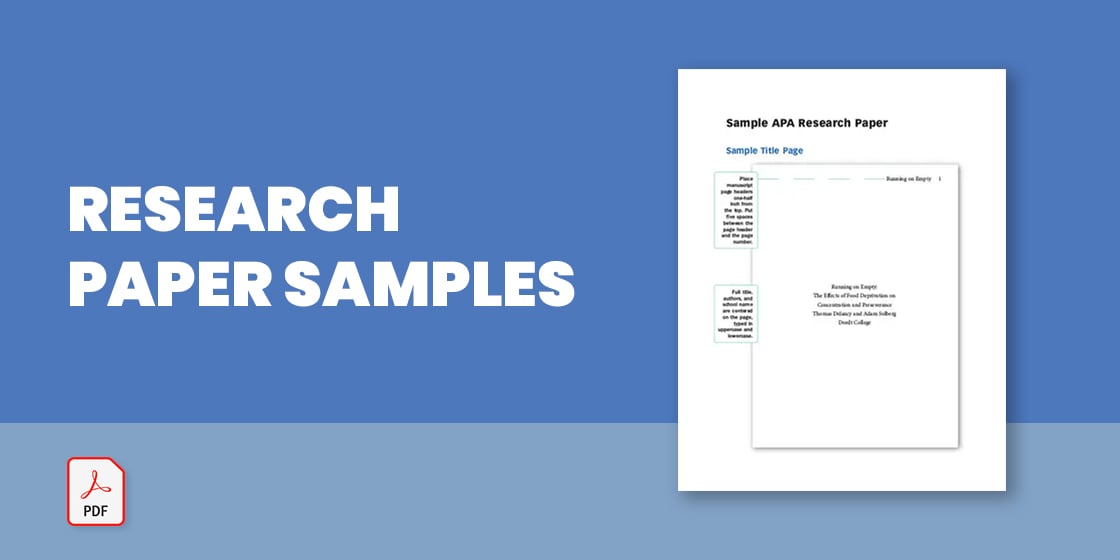
Essay Outline For Research Paper Template
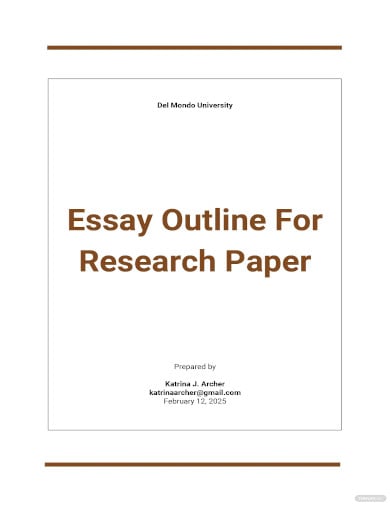
- Google Docs
Research Paper Rubric Template
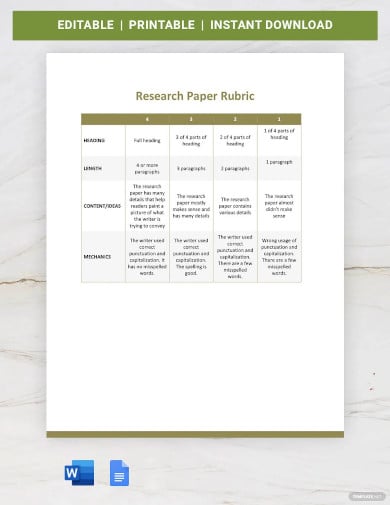
Simple Research Paper Template
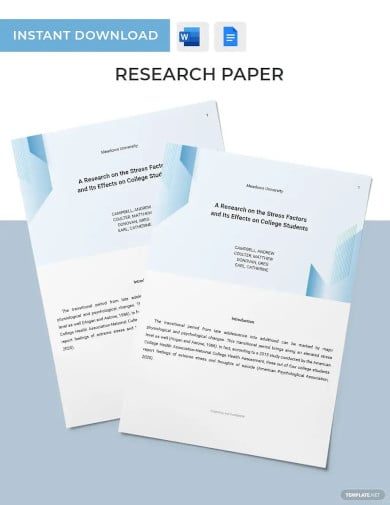
- Apple Pages
Business Research Paper Template

Research Paper Format Template
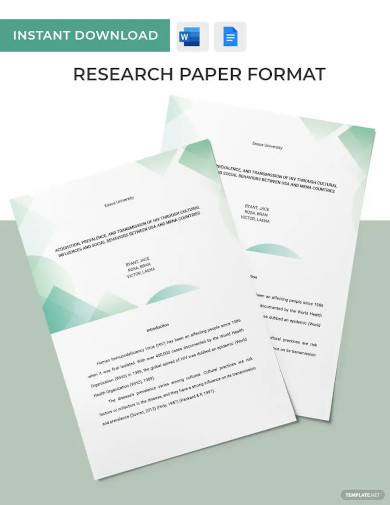
Formal Research Paper Template
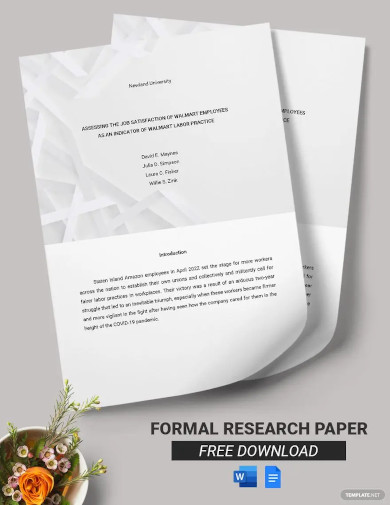
APA Research Paper
Apa style research paper.
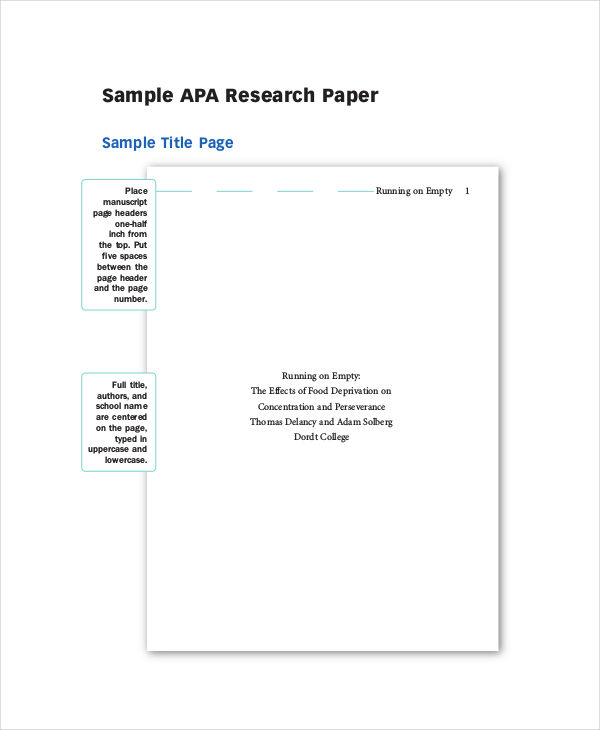
APA Format Research Paper
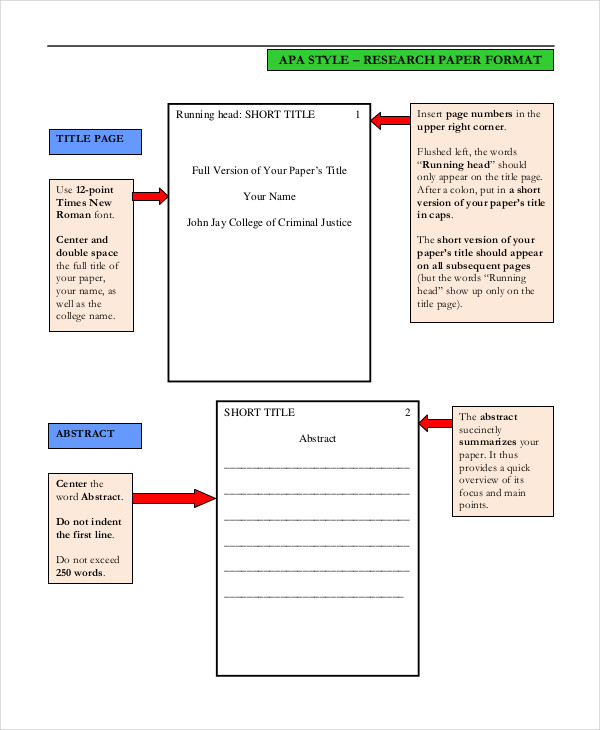
Research Paper Samples
- Identifying the research problem of your research
- Review of literature
- Formulating hypothesis
- Selection of research design
- Data collection process
- Data analysis
- Interpretation of data
- Research publication and research report
MLA Research Paper
Mla citations research paper.
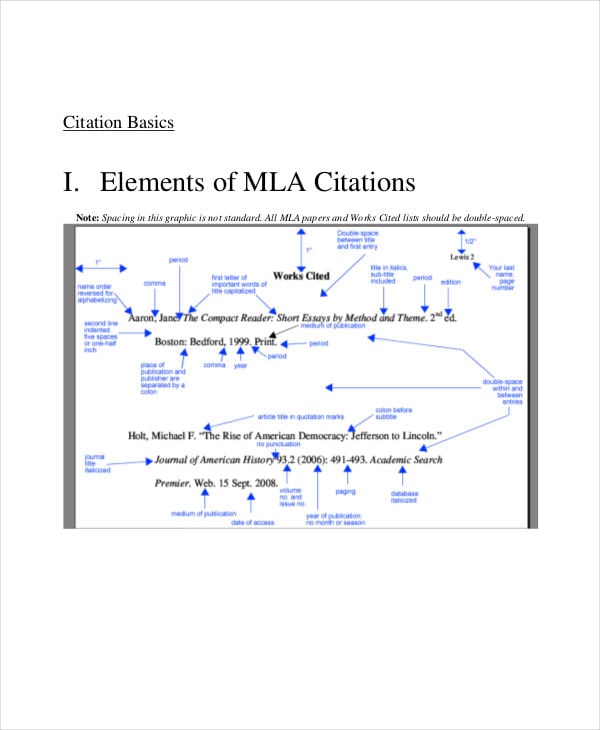
MLA Style Research Introduction Paper
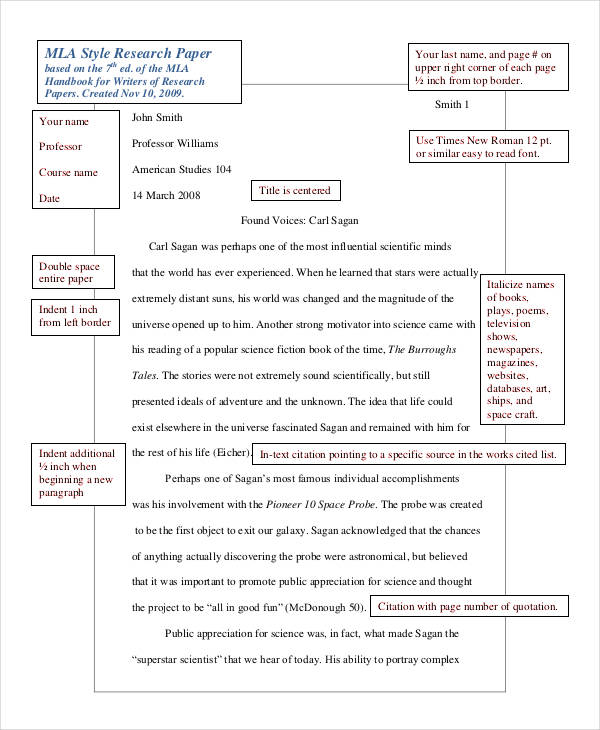
What Is a Research Paper?
- Analysis of a particular perspective
- The argument of a point
- Decision-making
Basic Parts of a Research Paper
- Research Title – This is a representation of the research’s statement of the problem which is addressed through the information indicated in the research.
- Introduction of Research – This general explanation of the overall topic covers background information and narrows them down to highlight the focus of the research paper.
- Brief Summary – This part provides the problem statement templates along with specifications on the content of the research paper presented in summary.
- Methods of Research – This pertains to the materials and the methods conducted by the researcher to achieve the information he needs for the paper.
- Research Findings – This section gives the reader the results after the methods have been executed.
- Concluding Statements – In consideration of the research findings generated, a conclusion is generated regarding various fields it applies.
- References – Various print and digital sources looked into in the creation of the research paper are alphabetized under this category.
Action Research Paper
Affirmative action research paper.
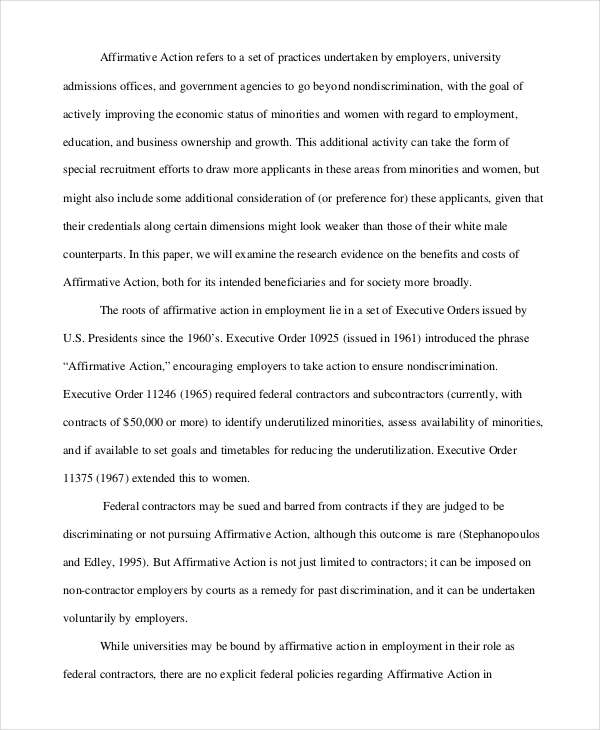
Sample Action Plan for Research Paper
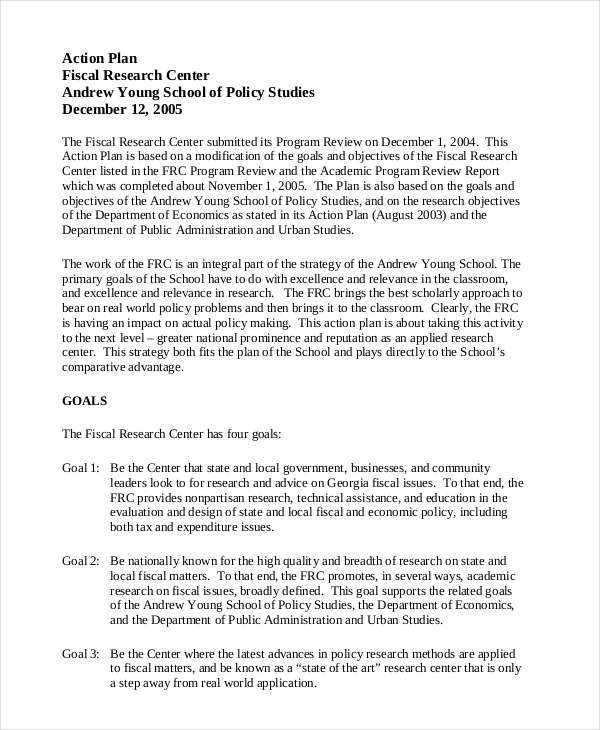
Free Proposal Paper for Action Research
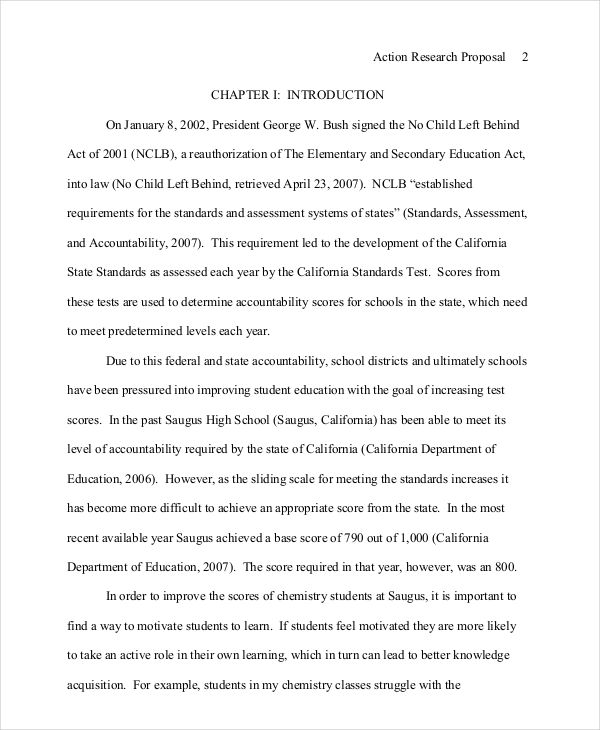
Research Proposal Paper
Research topic english essay proposal paper.
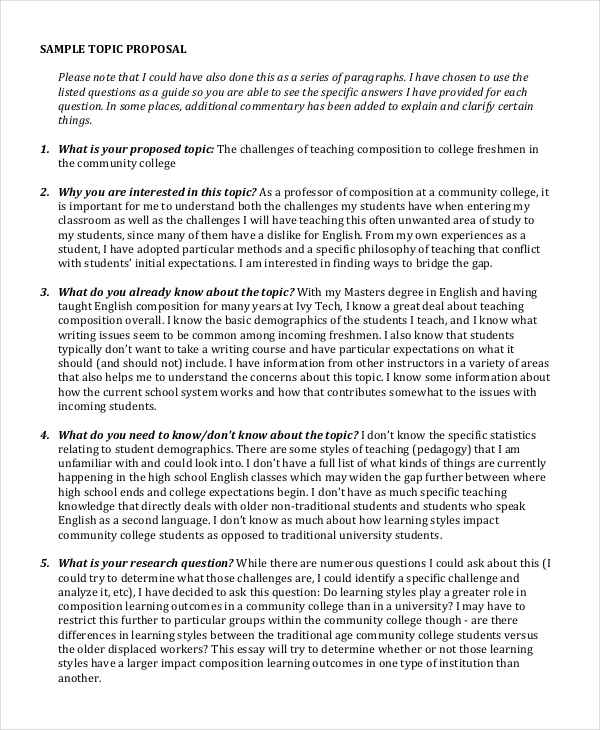
Business Research Paper
International business research paper.

Free Small Business Research Paper

Research Cover Page Paper for Business Intelligence
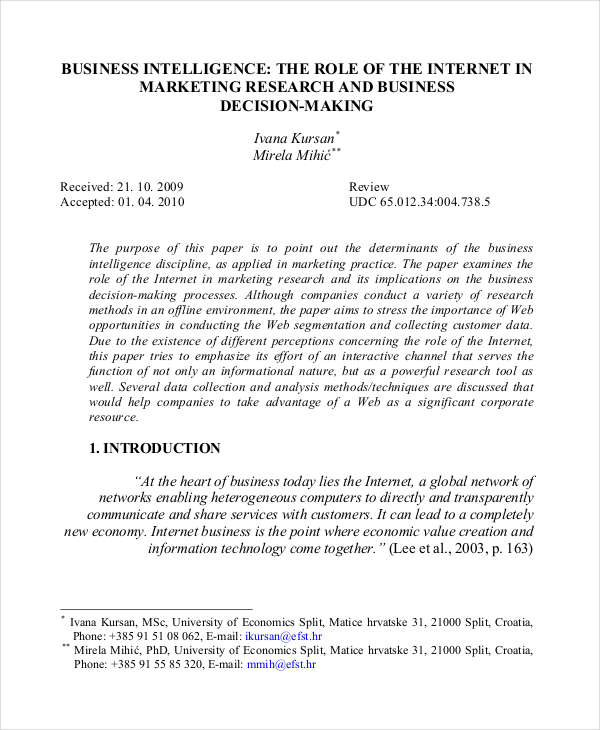
Business School Research Paper Outline

Kinds of Research Paper Sample Templates
- Action Research Paper – Certain actions of a business are a result of the company’s extensive research evident in this sample template.
- Research Proposal Paper – Proposals to top management include this type of sample template since business decisions need concrete bases like research.
- Marketing Research Paper – Promotional activities are first studied with the use of this sample template that aids the company in the creation of a marketing plan .
- Descriptive Research Paper – Research papers under this type of sample template describe the existence of facts from relative studies or raw sources of information.
- Education Research Paper – This applies to an education major with a focus on topics related to education.
- Literary Research Paper – This research paper sample template covers literary analysis and the uses of standard format of citations such as the APA and MLA format.
- Science Research Paper – Projects on any different kinds of science are not plausible without the aid of this sample template.
- Career Research Paper Sample – This sample template presents how different career developments and exploration are executed with the use of this research paper.
- Graduate Research Paper Sample – Graduate schools require the submission of this type of sample template from their students, particularly for end-of-semester requirements.
Career Research Paper
Nursing career research paper.

Free Career Exploration Research Paper
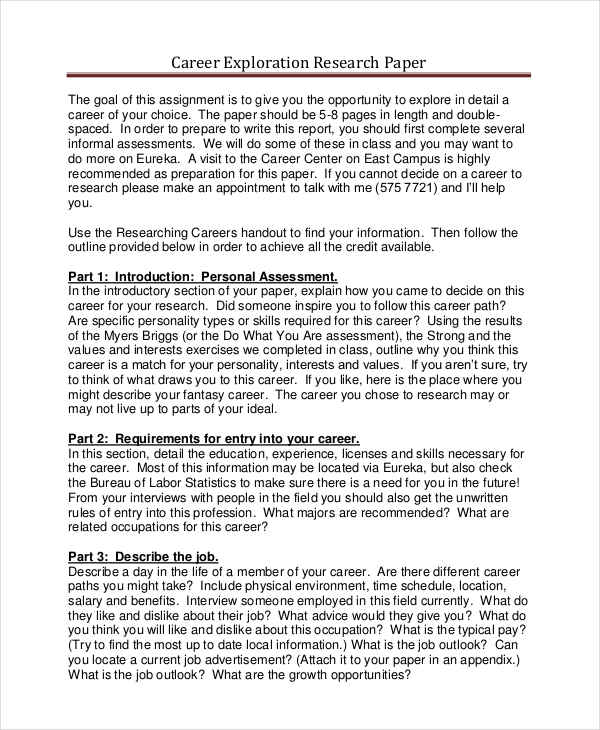
Research Paper Summary on Career Development
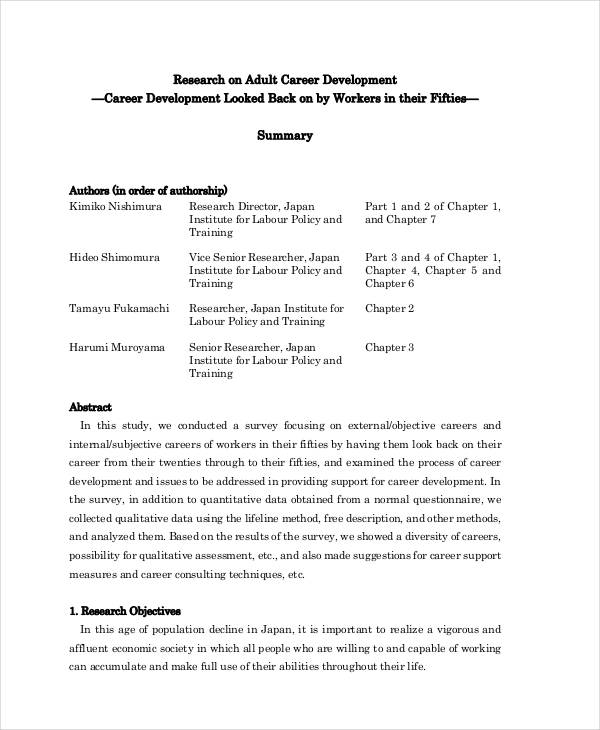
Descriptive Research Paper
Descriptive statistics methodology thesis research paper.
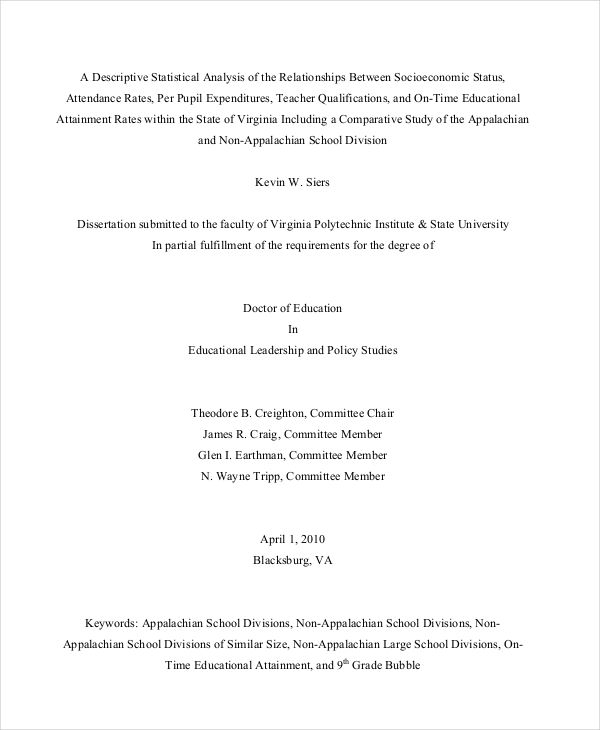
Education Research Paper
Research paper on physical education.
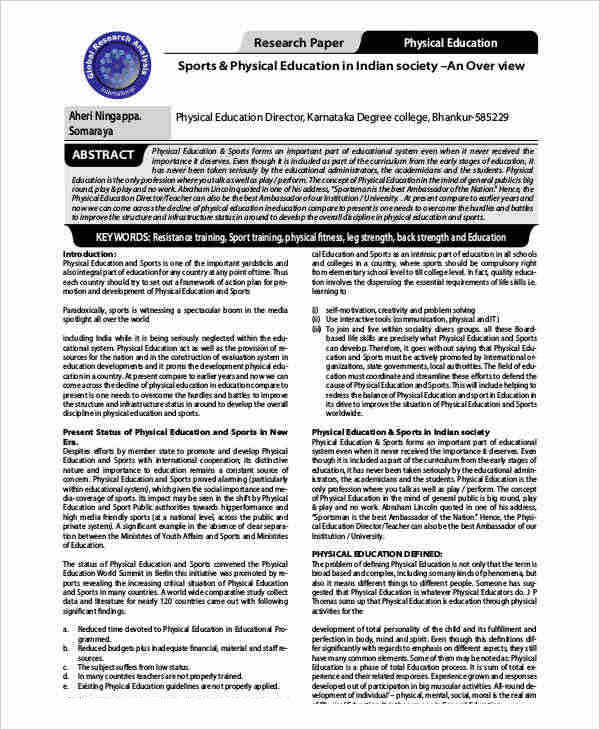
Free Education Action Research Paper
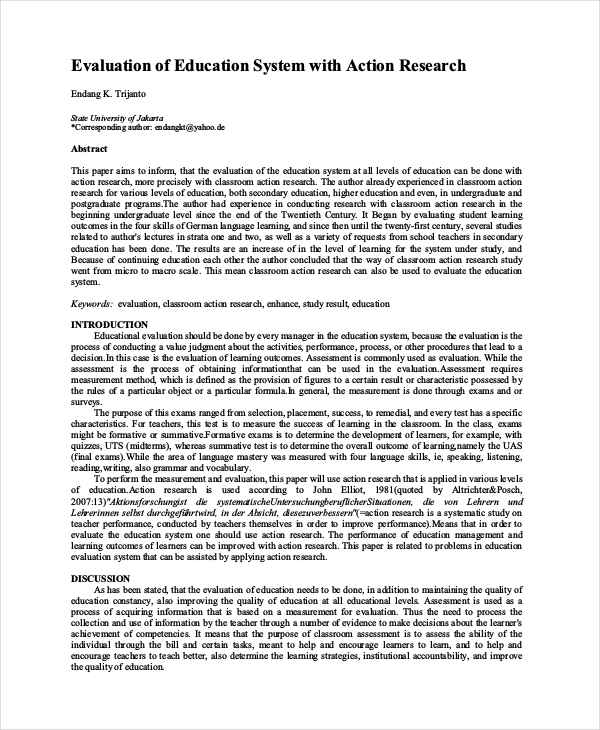
Education Technology Research Paper
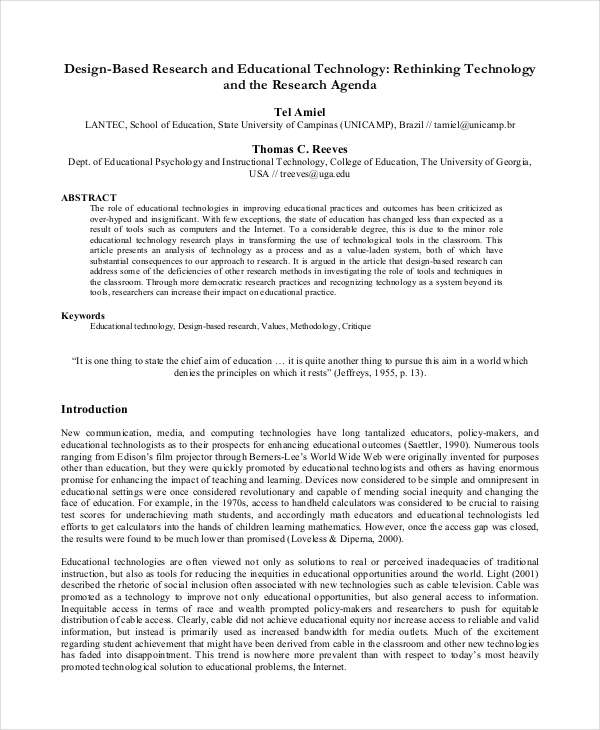
Guide to Writing a Good Research Paper
- Make sure to cite your research sources. Your research’s source of information like the journal paper templates of this website must be acknowledged and arranged in the bibliography section of the research paper.
- Use formal and professional words throughout the paper. Colloquial terms and informal words are prohibited in the research since it disrupts the formality and the subjective presentation of research data.
- Follow proper formatting for the research. Your research proper must present the right format of paragraphs for each section of the paper as well as the right arrangement of key points that should follow a logical order .
- Identify the importance and the purpose of the research. Before even starting the making of the research paper, it is vital for the researcher to know and to indicate the significance of conducting the research which is the purpose of the study.
- Produce detailed information for the research. The research information you base your paper on must be provided in detail on research paper since it serves as concrete support to your research findings and conclusion.
Graduate Research Paper
Graduate research study paper format.
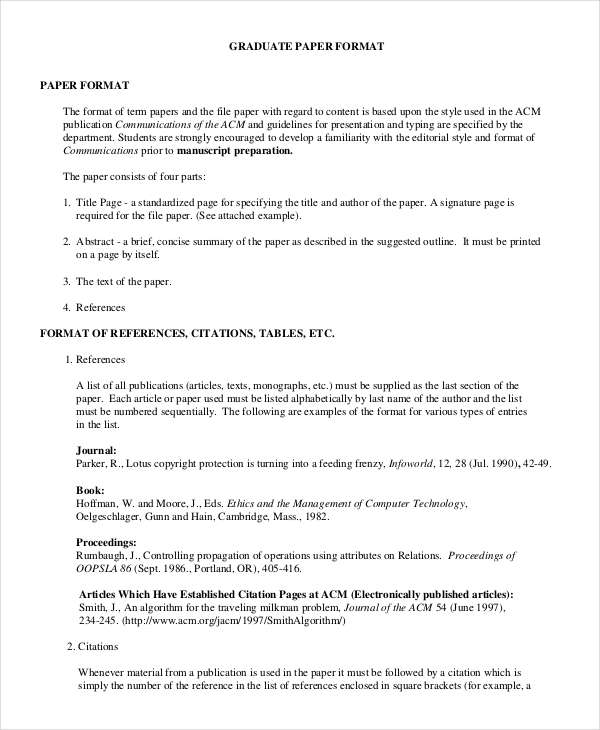
Research Paper for Graduate High School

Literary Research Paper
Literary analysis research paper.
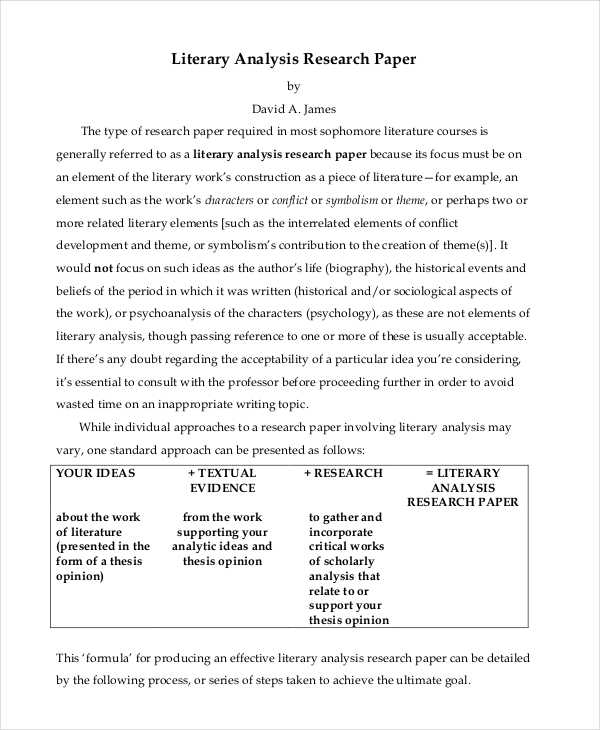
MLA Literary Research Paper
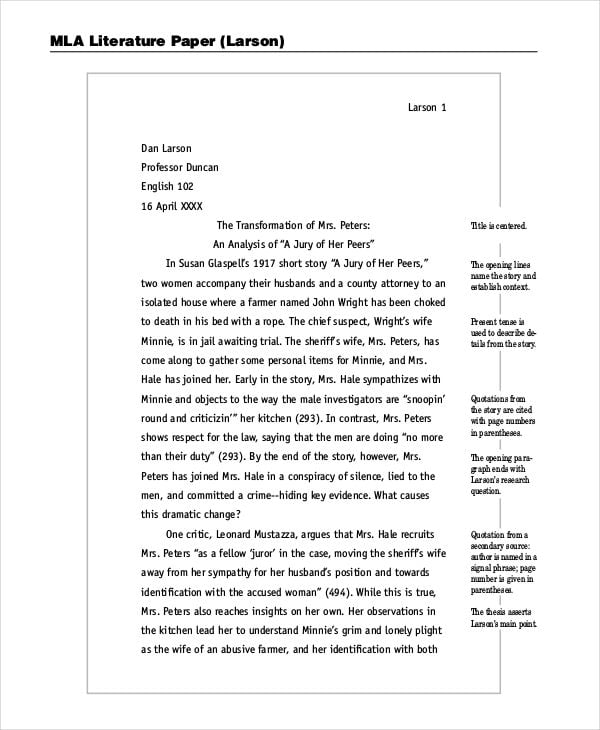
Marketing Research Paper
Social media marketing research paper.

Research Paper for Digital Marketing

Free Marketing Plan Research Paper
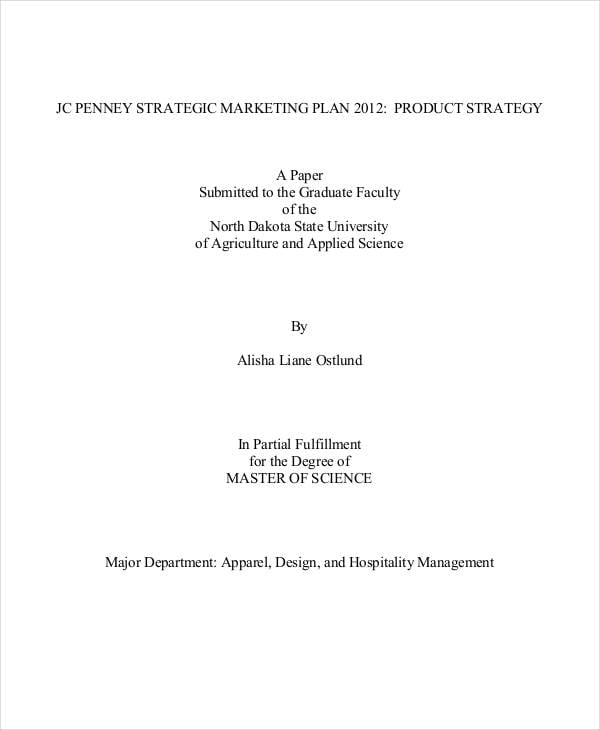
Student Research Paper
Nursing student research paper.

Research Paper for Working Student
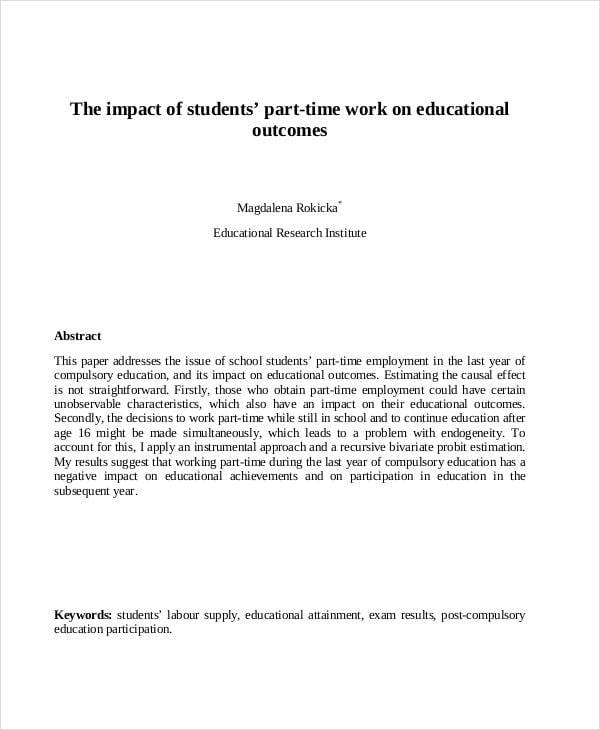
Science Research Paper
Science project research paper.

Free Computer Science Research Paper

Free Social Science Research Paper
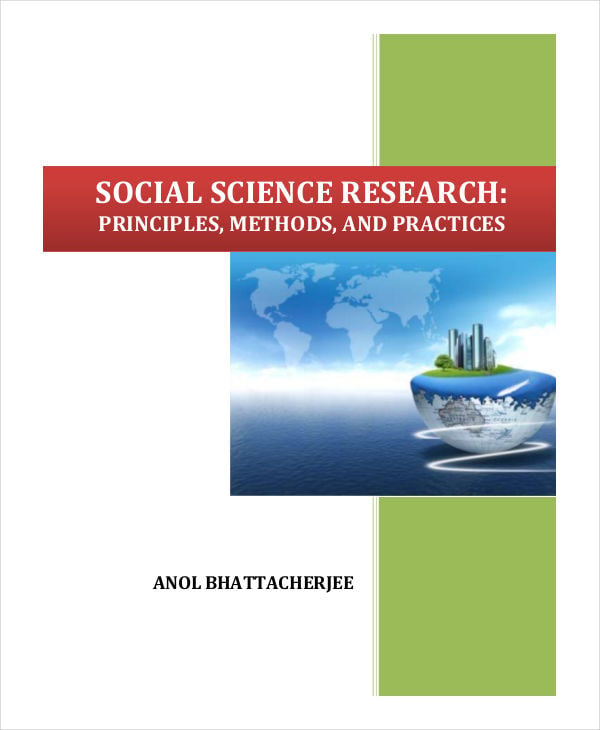
College Research Paper
College level research paper.
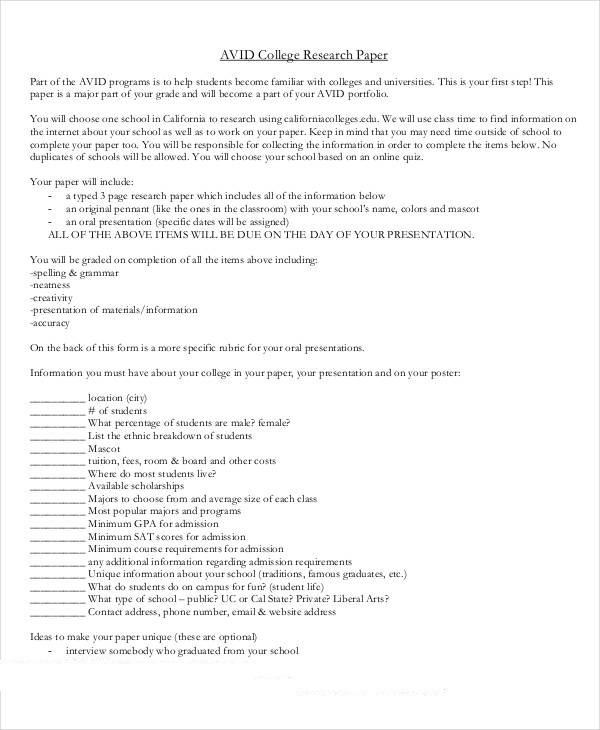
Free College Writing Research Paper
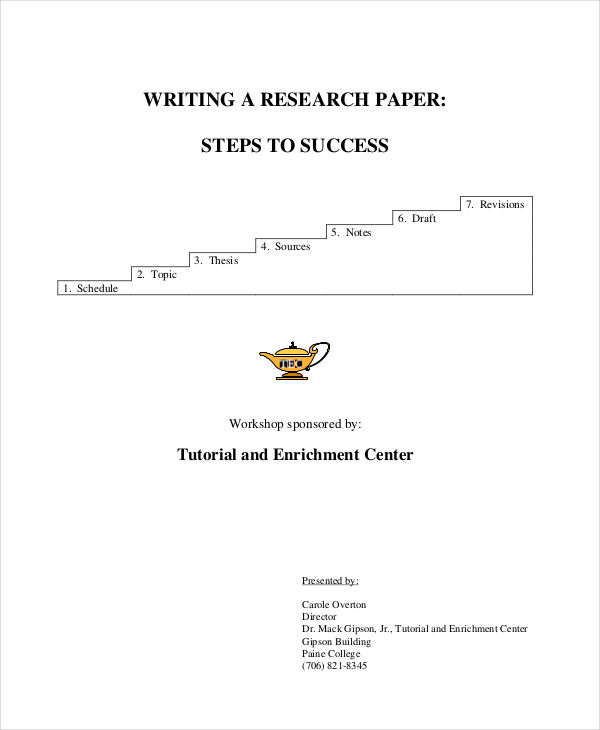
Purposes of a Research Paper
- To answer questions. A research paper is most commonly used to gain answers to certain scientific questions of the world. Discoveries are the results of extensive research presented in the research paper.
- To present facts formally. Considering the formal feature of a research paper contrary to the informal presentation of the sample notebook paper templates, sharing facts from research with the use of a research paper is the way to go for a researcher.
- To make reasonable decisions. Businesses often resort to the creation of research information on a professional research paper since concrete decisions are defined based on the research data on the paper.
More in Paper Templates
School Essay Template
Reflective essay template, interview essay in apa documentation style template, job interview essay report with introduction template, professional student interview essay template, orientation speech, closing ceremony speech template for event, business comparative research template, comparative market research template, comparative research outline template.
- 14+ Paper House Templates – PDF, DOC
- 46+ Cookbook Templates in PSD | AI | Vector EPS | InDesign | Publisher
- 28+ Lined Paper Templates
- 18+ Paper Cube Templates – PDF, DOC
- 28+ Printable Notebook Paper Templates
- 38+ White Paper Examples in MS Word | Google Docs | Apple Pages | PDF
- FREE 10+ Research Paper Proposal Templates in PDF | MS Word
- 13+ Lined Paper Templates – DOC, PDF, Excel
- 43+ Free White Paper Templates
- 10+ Free Paper Cutting Templates – PDF
- 11+ Lined Paper Templates – PDF
- 26+ Paper Format Templates -PDF
- 25+ White Paper Formats
- 8+ Academic Paper Templates – PDF
File Formats
Word templates, google docs templates, excel templates, powerpoint templates, google sheets templates, google slides templates, pdf templates, publisher templates, psd templates, indesign templates, illustrator templates, pages templates, keynote templates, numbers templates, outlook templates.

IMAGES
COMMENTS
Theorem 1.2.1. A homogenous system of linear equations with more unknowns than equations always has infinitely many solutions. The definition of matrix multiplication requires that the number of columns of the first factor A be the same as the number of rows of the second factor B in order to form the product AB.
Place your paper title 3 or 4 lines down from your paper's top margin. The title's typeface should appear in boldface and title case. This title should also be placed at the top of your paper's first page of text. Each of the following items appear centered, double spaced, in title case and regular typeface: 2.
APA Citation Style: A Sample. Student's Name. Department's name, University of Hawai'i - West O'ahu. PSY 250: Social Psychology. Instructor's name. October 23, 2020. The due date for the assignment should be here. The title should be centered, bolded, and 3-4 lines below the top of the page. Authors' names are written below the title ...
If you are working on your research paper for the first time, here is a collection of examples that you will need to understand the paper's format and how its different parts are drafted. Continue reading the article to get free research paper examples. On This Page. 1. Research Paper Example for Different Formats.
The following two sample papers were published in annotated form in the Publication Manual and are reproduced here as PDFs for your ease of use. The annotations draw attention to content and formatting and provide the relevant sections of the Publication Manual (7th ed.) to consult for more information.. Student sample paper with annotations (PDF, 5MB)
experienced an average decrease of 11.5 hours of work per week and a 21% decrease in weekly earnings, arnings for 52% of the sample, which again re ects s. variation in the e ects of COVID-19 across students. In terms of labor market expectations, on average, students foresee a 13 percentage points decrease in.
Sample APA Research Paper Sample Title Page Running on Empty 1 Running on Empty: The Effects of Food Deprivation on Concentration and Perseverance Thomas Delancy and Adam Solberg Dordt College Place manuscript page headers one-half inch from the top. Put five spaces between the page header and the page number. Full title, authors, and school name
Media Files: APA Sample Student Paper , APA Sample Professional Paper This resource is enhanced by Acrobat PDF files. Download the free Acrobat Reader. Note: The APA Publication Manual, 7 th Edition specifies different formatting conventions for student and professional papers (i.e., papers written for credit in a course and papers intended for scholarly publication).
QUALITATIVE RESEARCH PAPER 45 population sample, so your study is limited by the number of participants, or that you used a convenience sample. Summary Then the author would wrap up the chapter with the summarization of the chapter and a transition to the next chapter as described above. Notice that this section started with a ...
the research setting, the sample, instrumen-tation (if relevant), and methods of data collection and analysis used. • Rationale and significance: Rationale is the justification for the study presented as a logical argument. Significance addresses the benefits that may be derived from doing the study, thereby reaffirming the research purpose.
Research paper examples are of great value for students who want to complete their assignments timely and efficiently. If you are a student in the university, your first stop in the quest for research paper examples will be the campus library where you can get to view the research sample papers of lecturers and other professionals in diverse fields plus those of fellow students who preceded ...
Research Paper Template. The fastest (and smartest) way to craft a research paper that showcases your project and earns you marks. Available in Google Doc, Word & PDF format. 4.9 star rating, 5000+ downloads. Download Now (Instant access)
Surprises at a Local "Family" Restaurant: Example Quantitative Research Paper A quantitative research paper with that title might start with a paragraph like this: Quaintville, located just off the main highway only five miles from the university campus, may normally be a sleepy community, but recent plans to close the only fast-food ...
A research paper is a part of academic writing where there is a. gathering of information from different sources. It is based on. author's original research on particular topic, collection of ...
The main guidelines for formatting a paper in APA Style are as follows: Use a standard font like 12 pt Times New Roman or 11 pt Arial. Set 1 inch page margins. Apply double line spacing. If submitting for publication, insert a APA running head on every page. Indent every new paragraph ½ inch.
Develop a thesis statement. Create a research paper outline. Write a first draft of the research paper. Write the introduction. Write a compelling body of text. Write the conclusion. The second draft. The revision process. Research paper checklist.
friends on social media. Earlier research conducted by Gross (2004) reflects similar results. In his survey of 261 students in grades 7-10, he found that students spend an average of 40 minutes texting per day. Likewise, research by Kowalski and Limber (2007) reflected comparable results of 3,767
A research proposal includes the details of your proposed research, the significance of the research, the impact your research will have on the area of research, and the methodology that you will use. For writing a research proposal, you need to discuss all of these factors. A research paper follows a set pattern and structure.
Vickie A. Kelly B.S. Washburn University, 1980 M.S. Central Michigan University 1991. Submitted to the Graduate Department and Faculty of the School of Education of Baker University in partial fulfillment of the requirements for the degree. Doctor of Education In Educational Leadership. December 2009.
defines content marketing as "a marketing strategy where brands create interest, relevance and. h customers by producing, curating and sharing content that. customer needs and delivers visible value" (Gerard, 2015). eation on various social media platforms enables brands to. romote visibility,audience interacti.
The findings of this research revealed that flexibility, cost-effectiveness, electronic research availability, ease of connection to the Internet, and well-designed class interface were students' positive experiences. The students' negative experiences were caused by delayed feedback from instructors, unavailable technical support from ...
43+ Research Paper Examples. 5 Ledger Paper Templates - Samples, Examples. 7 Strategy Paper Templates - Samples, Examples. 13+ Printable Graph Paper Templates - Samples, Examples. 7 Writing Paper Templates - PDF. A Complete Guide to Research Papers (200+ Templates and Samples Included) 39 Sample White Paper Templates.
sample-research-paper.pdf - Free download as PDF File (.pdf), Text File (.txt) or read online for free. This document provides an overview of a research paper that analyzes the academic performance of deviate first year college students at Xavier University. Specifically, it will examine students who enrolled in courses not aligned with their senior high school strand.